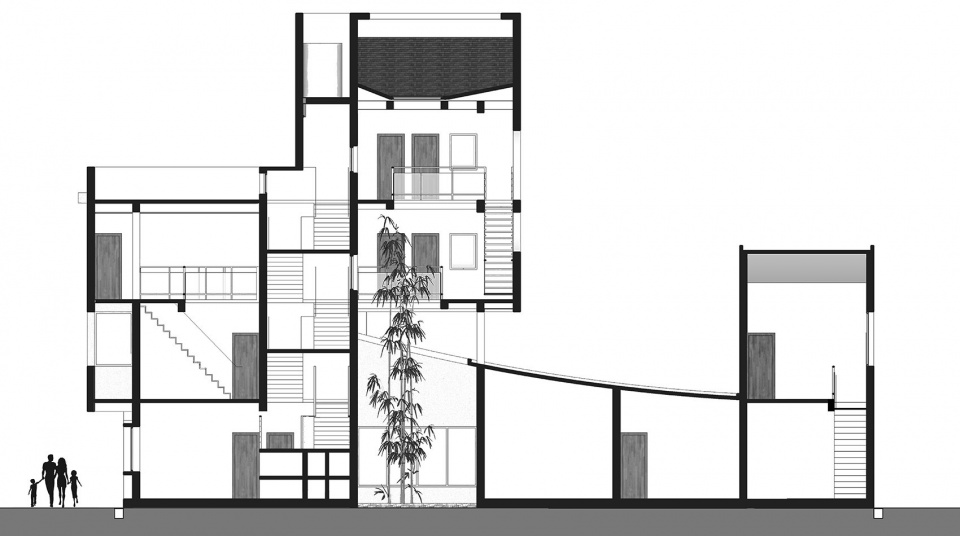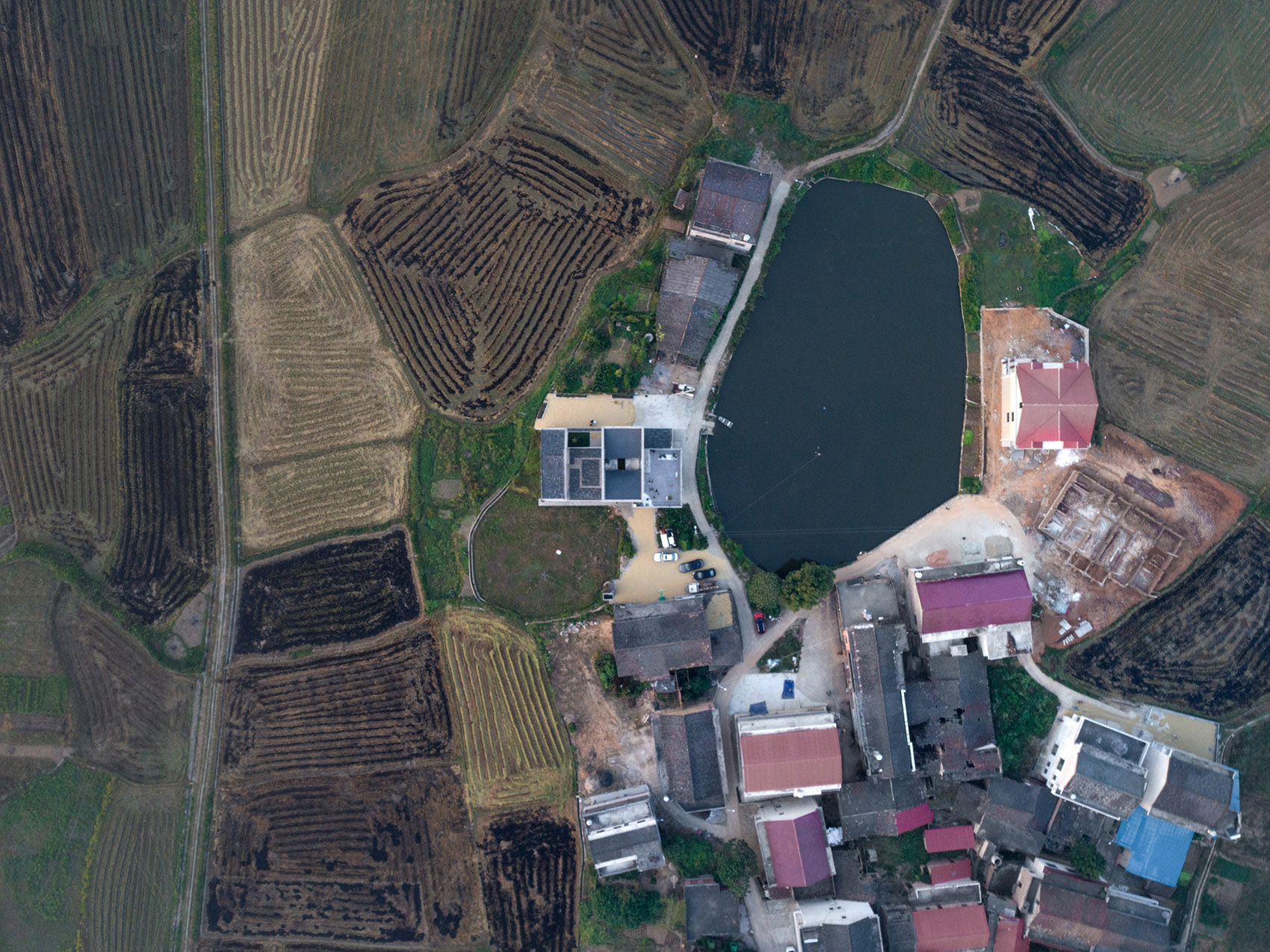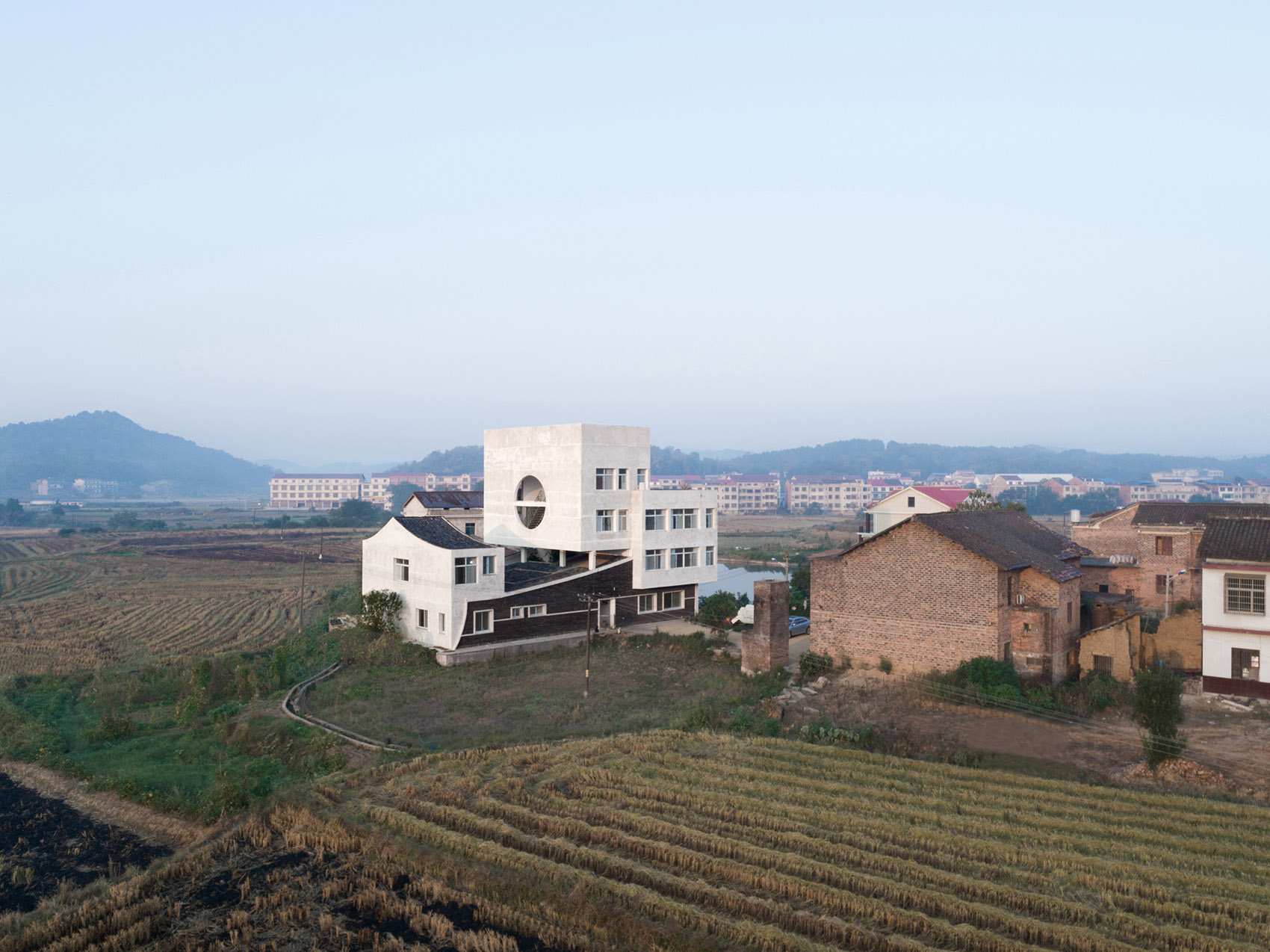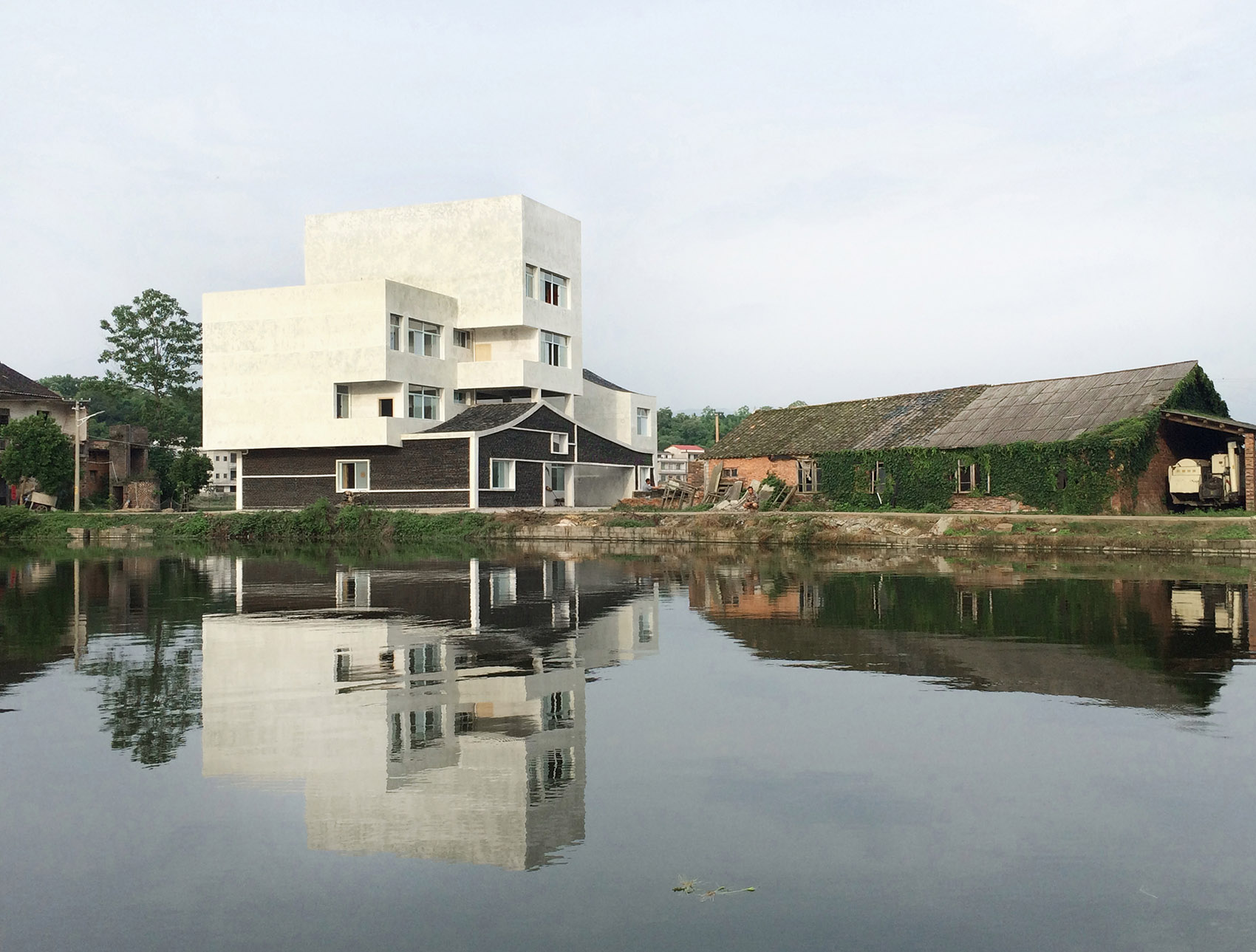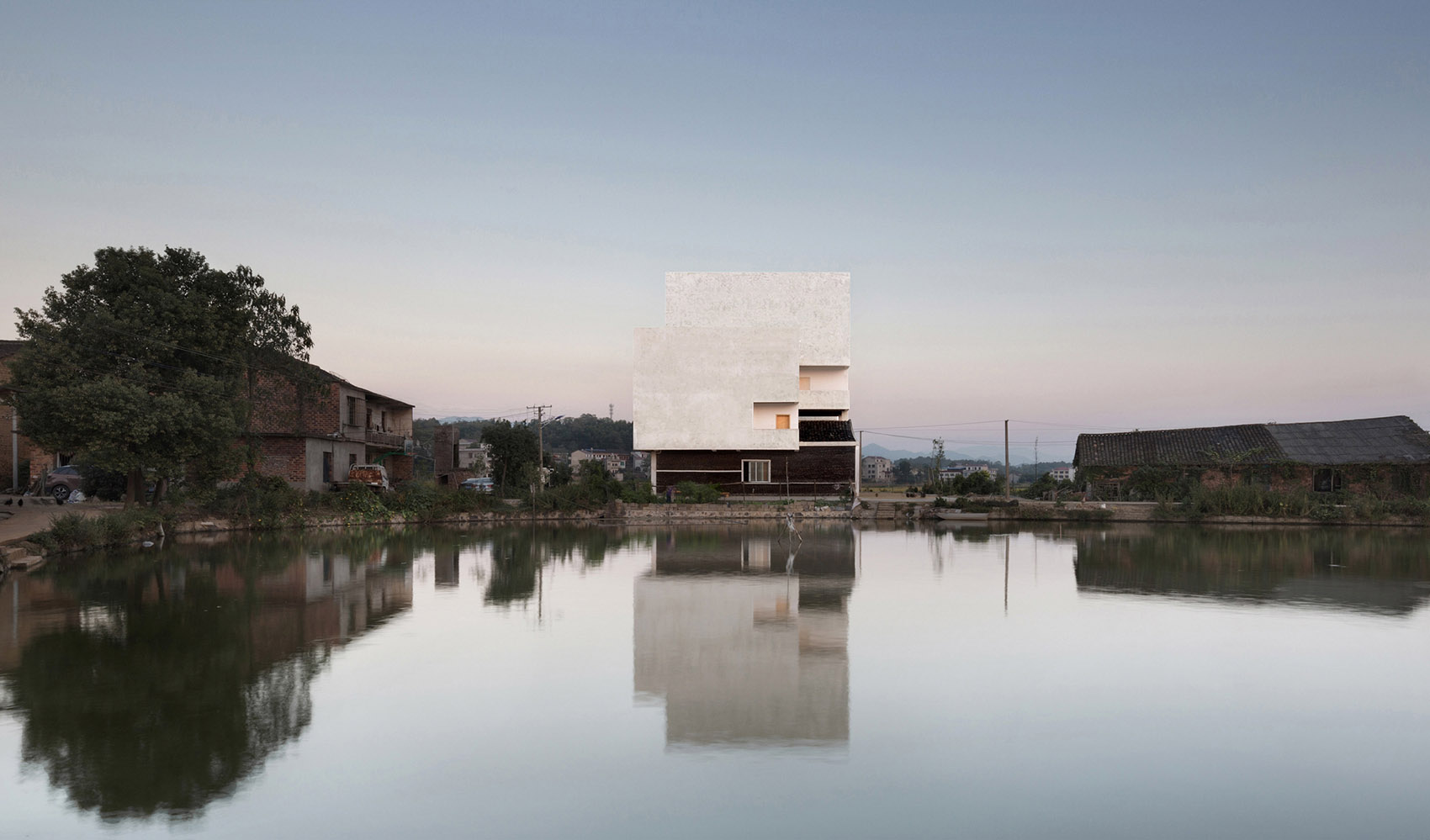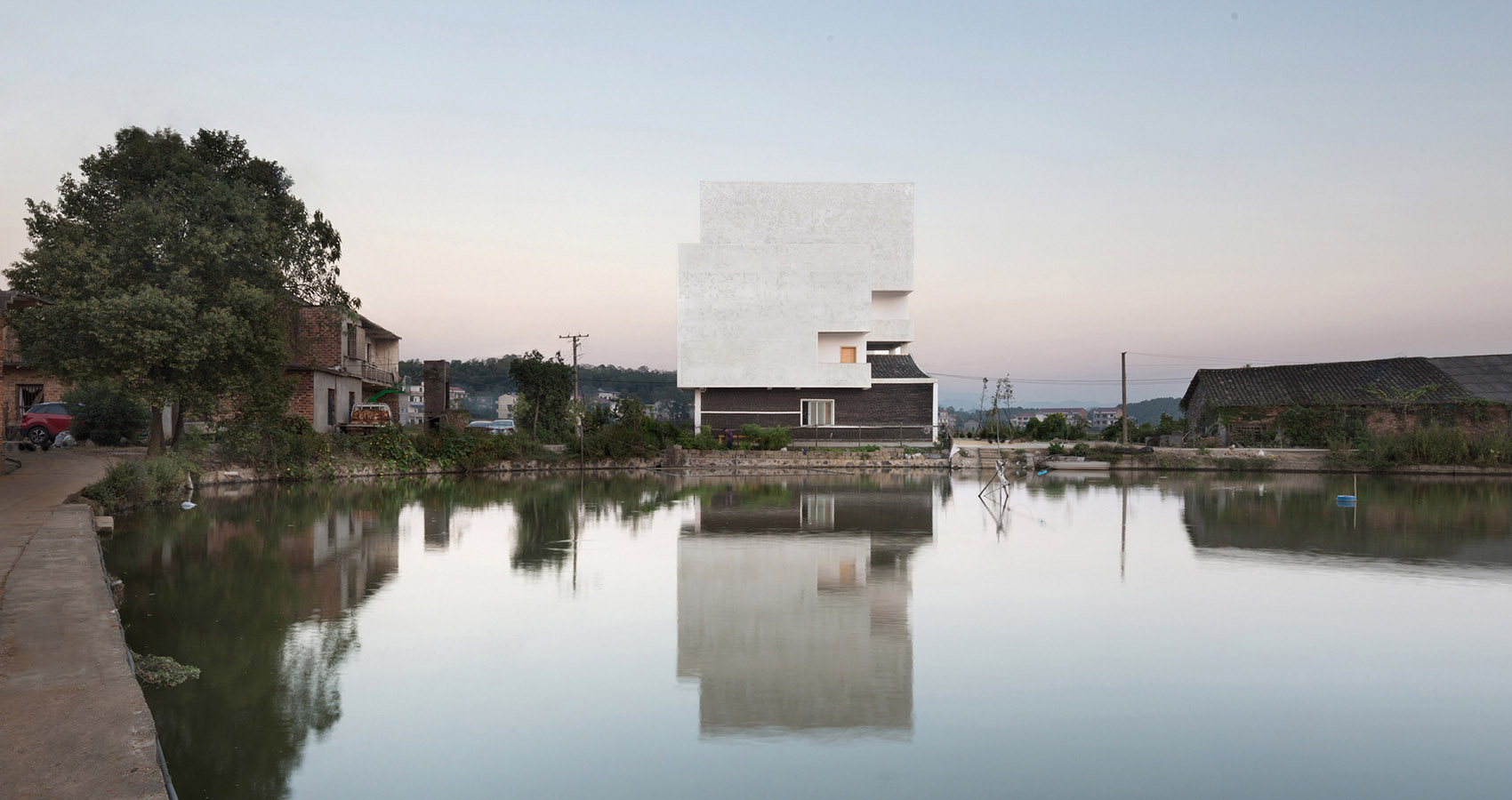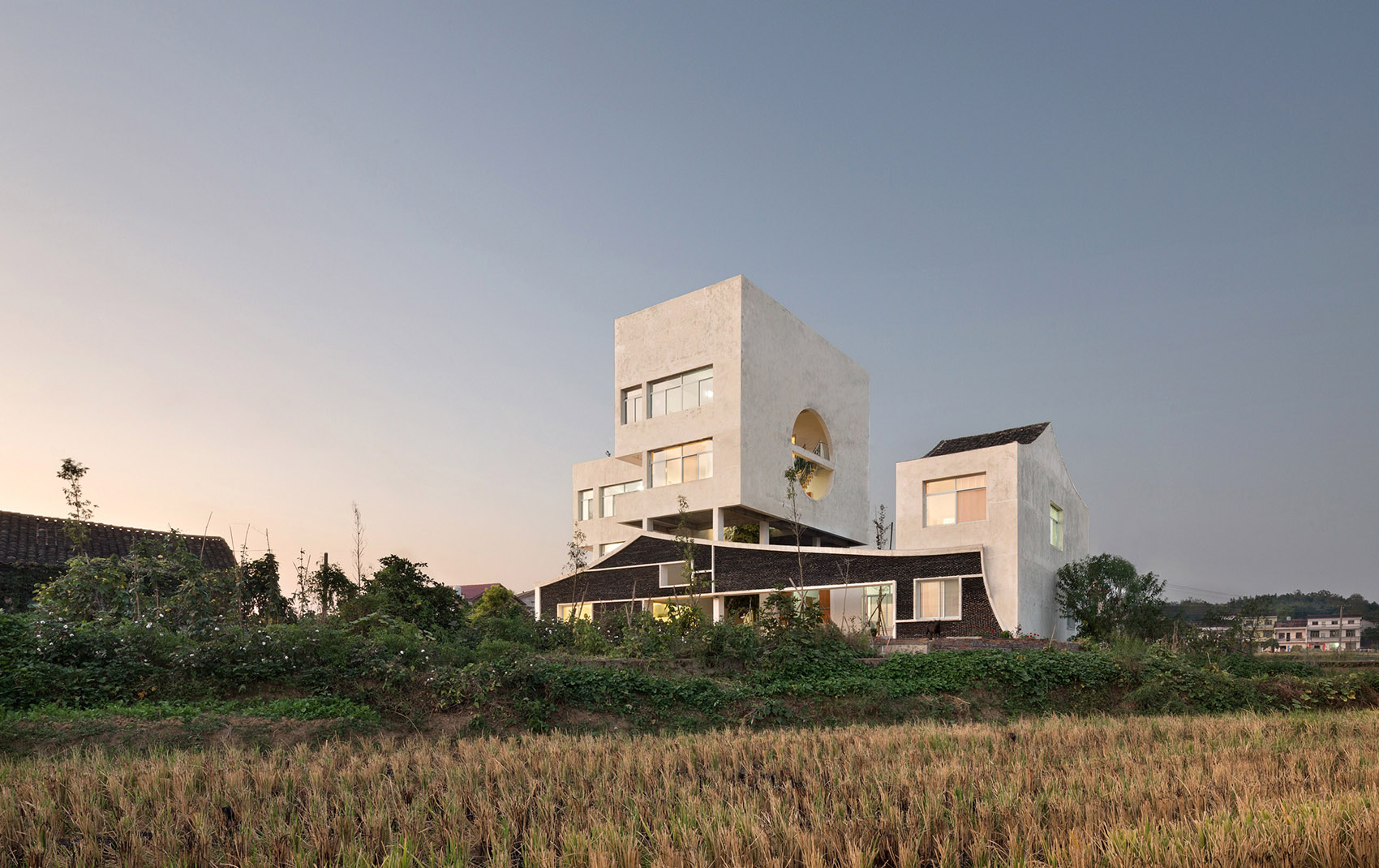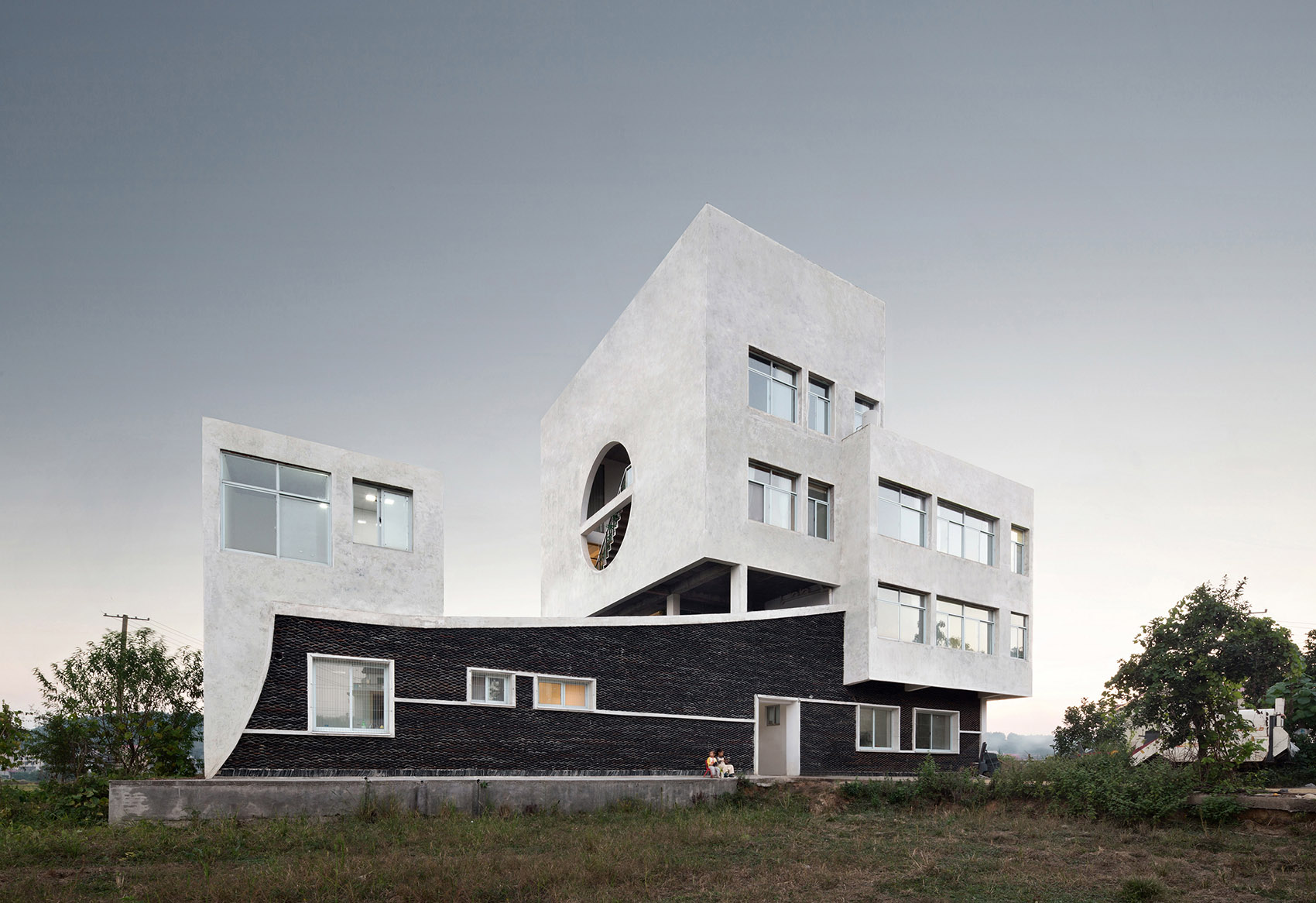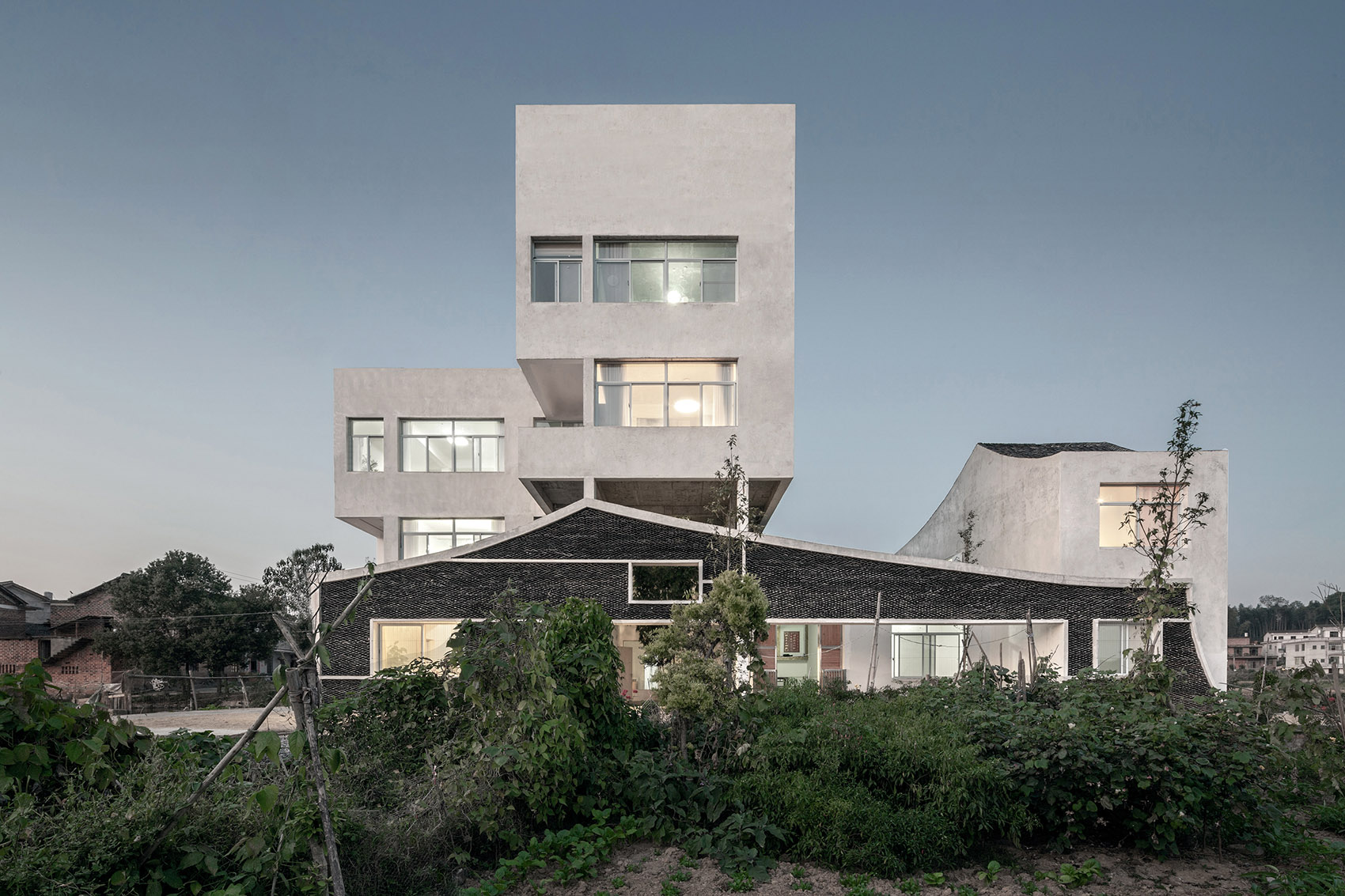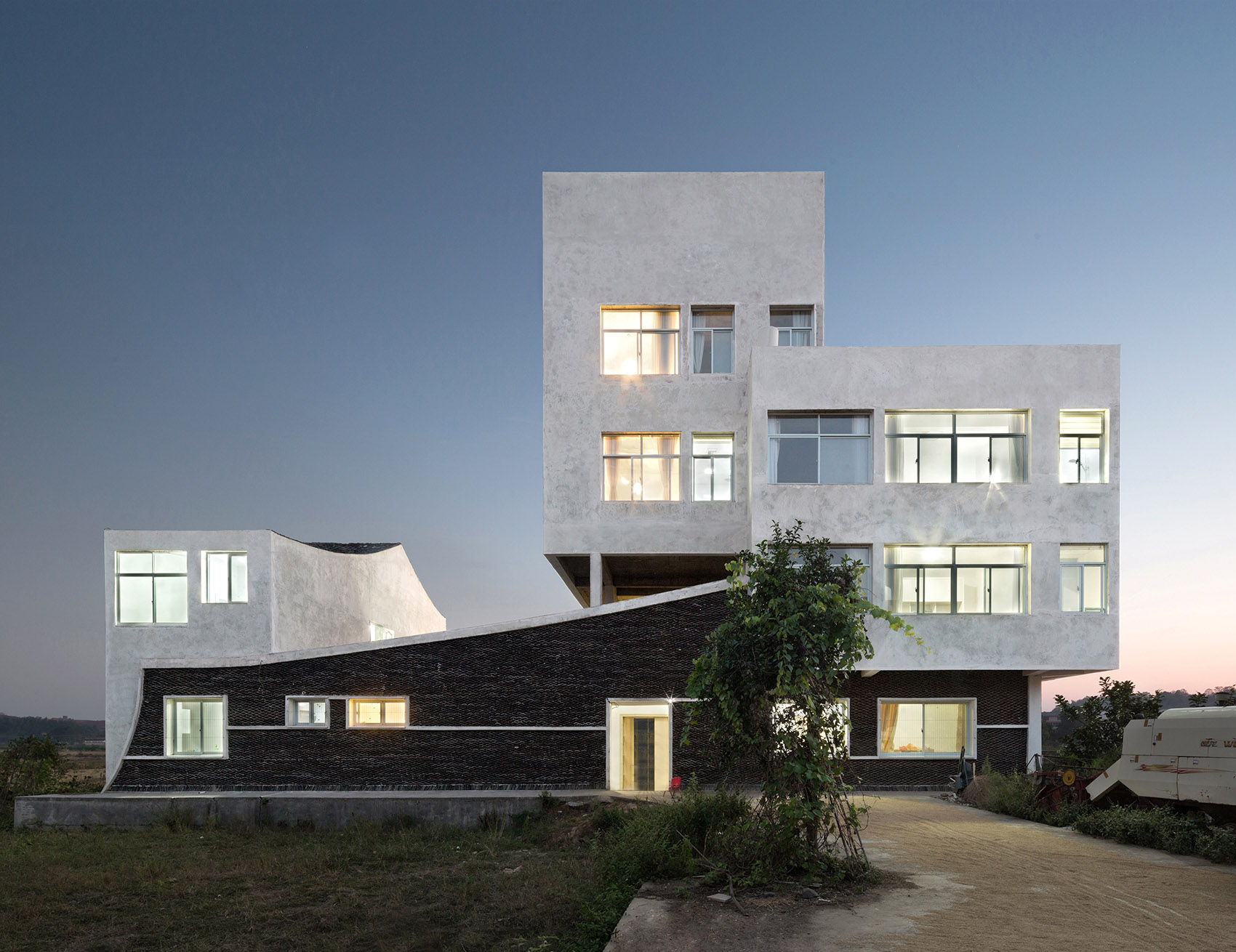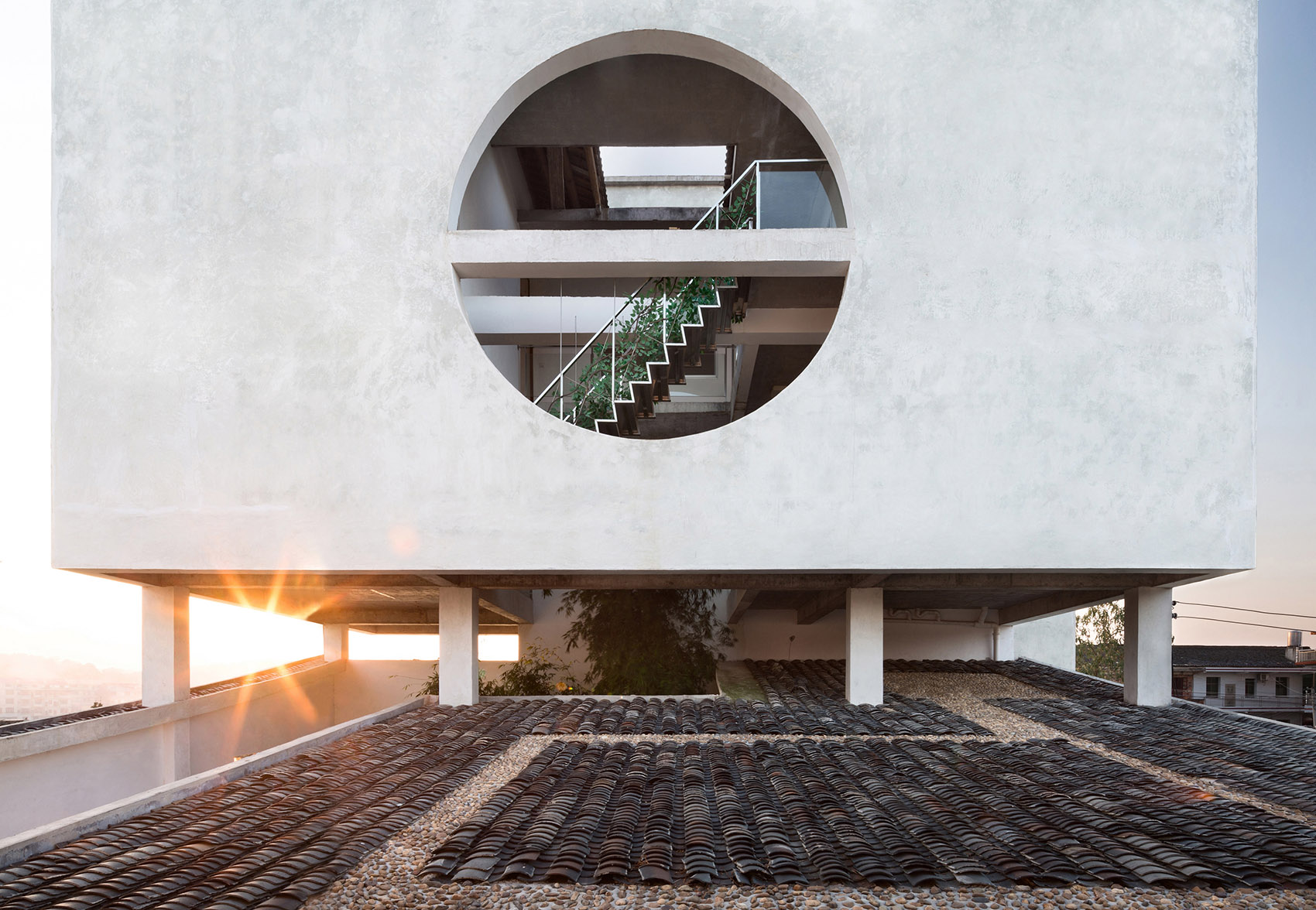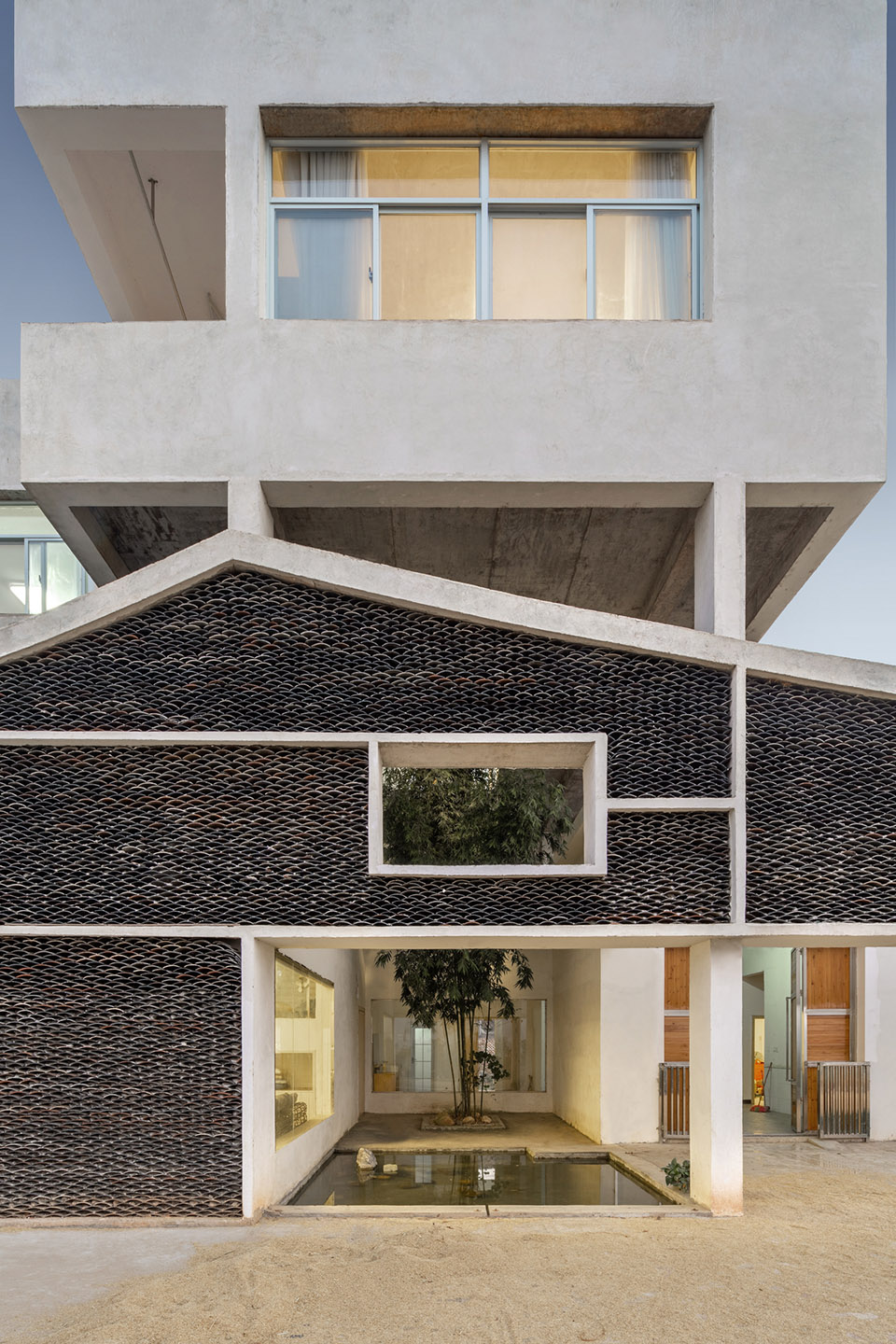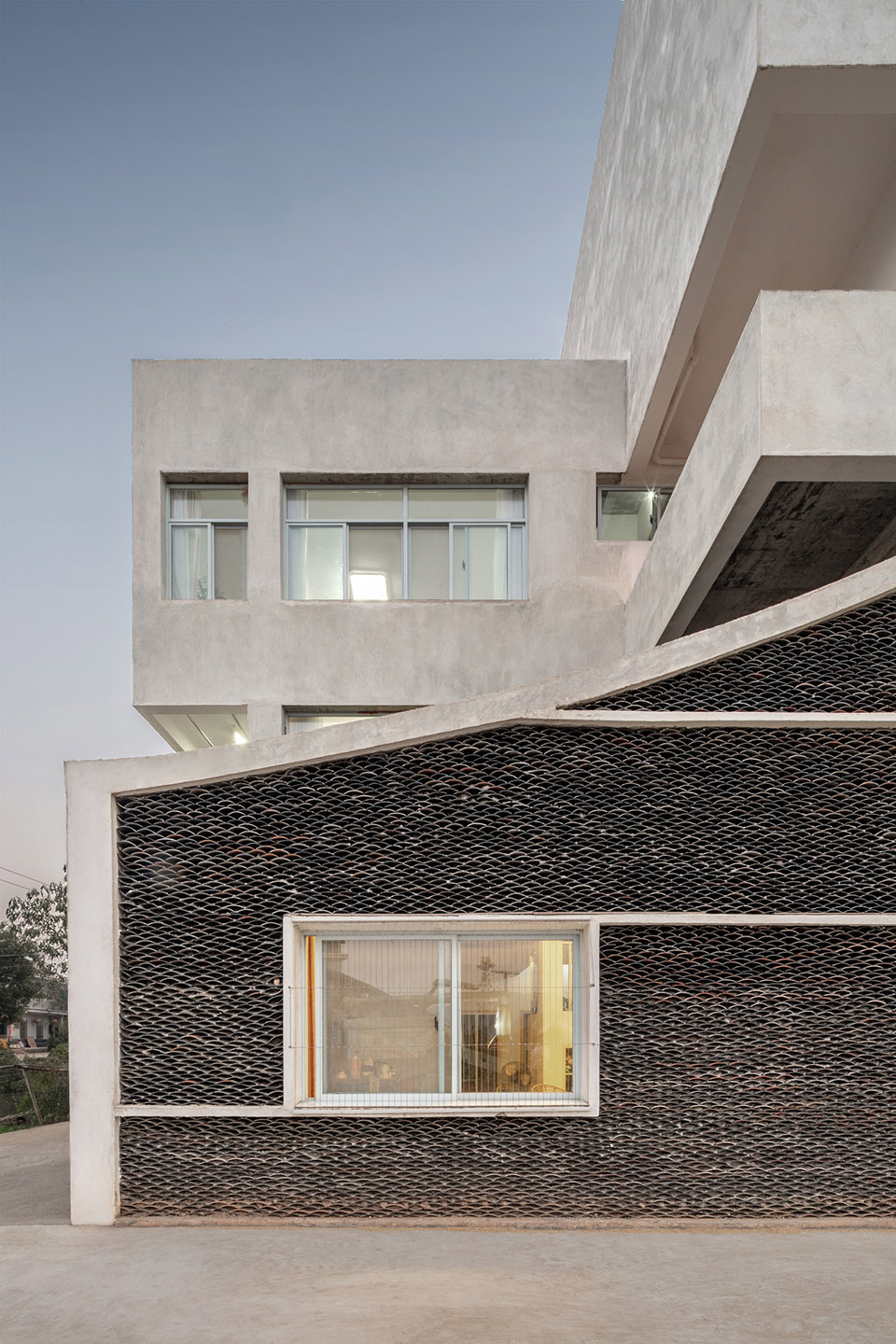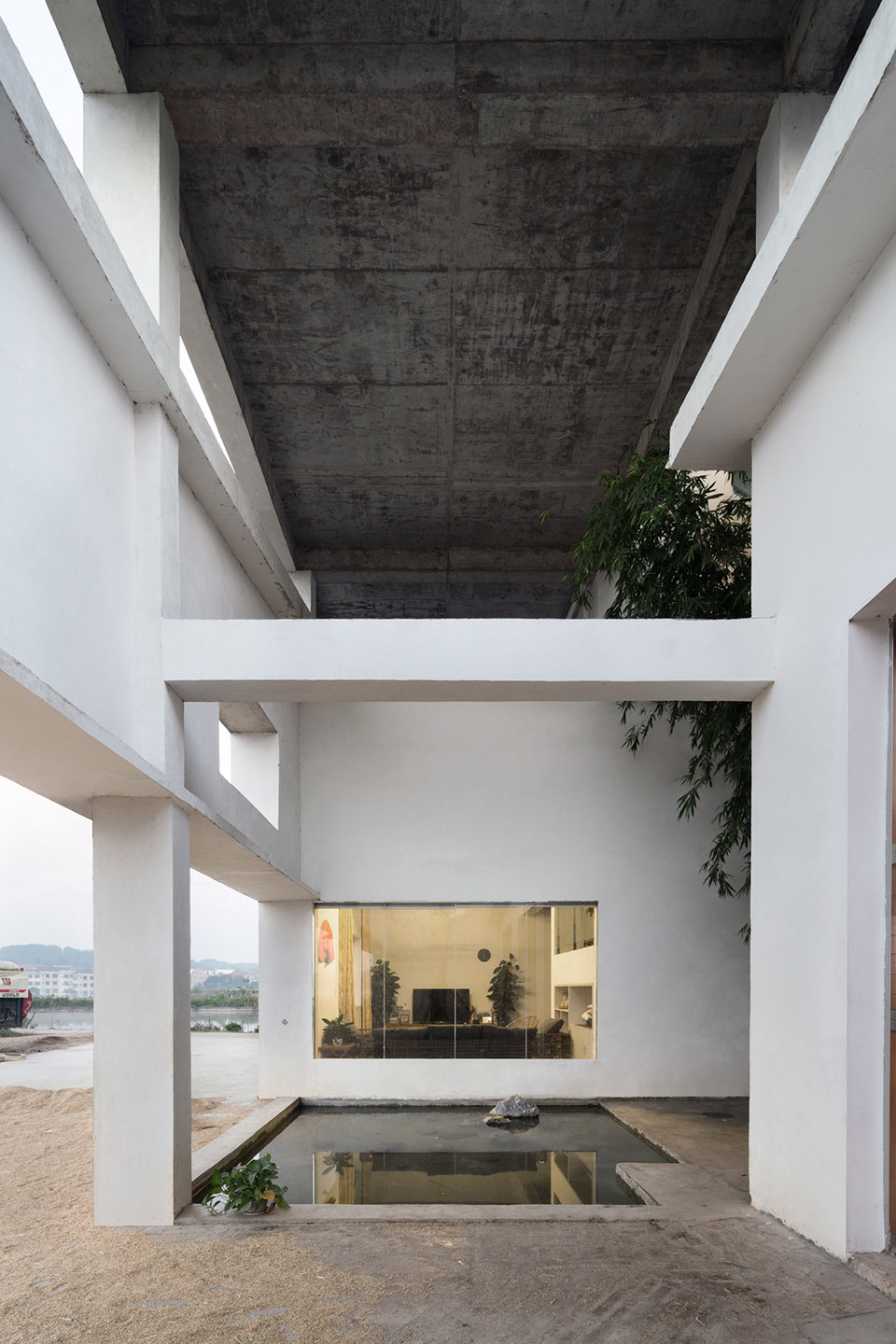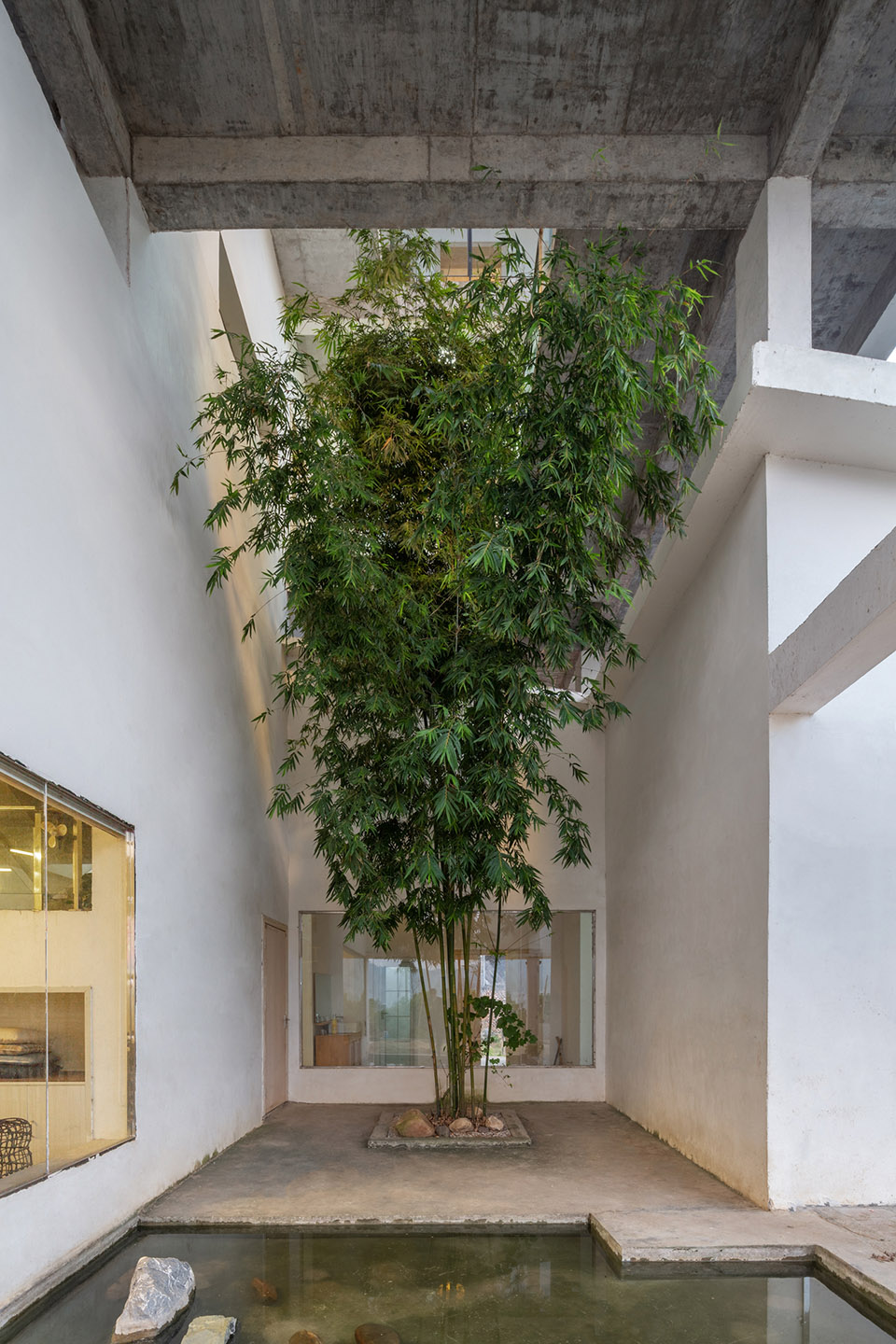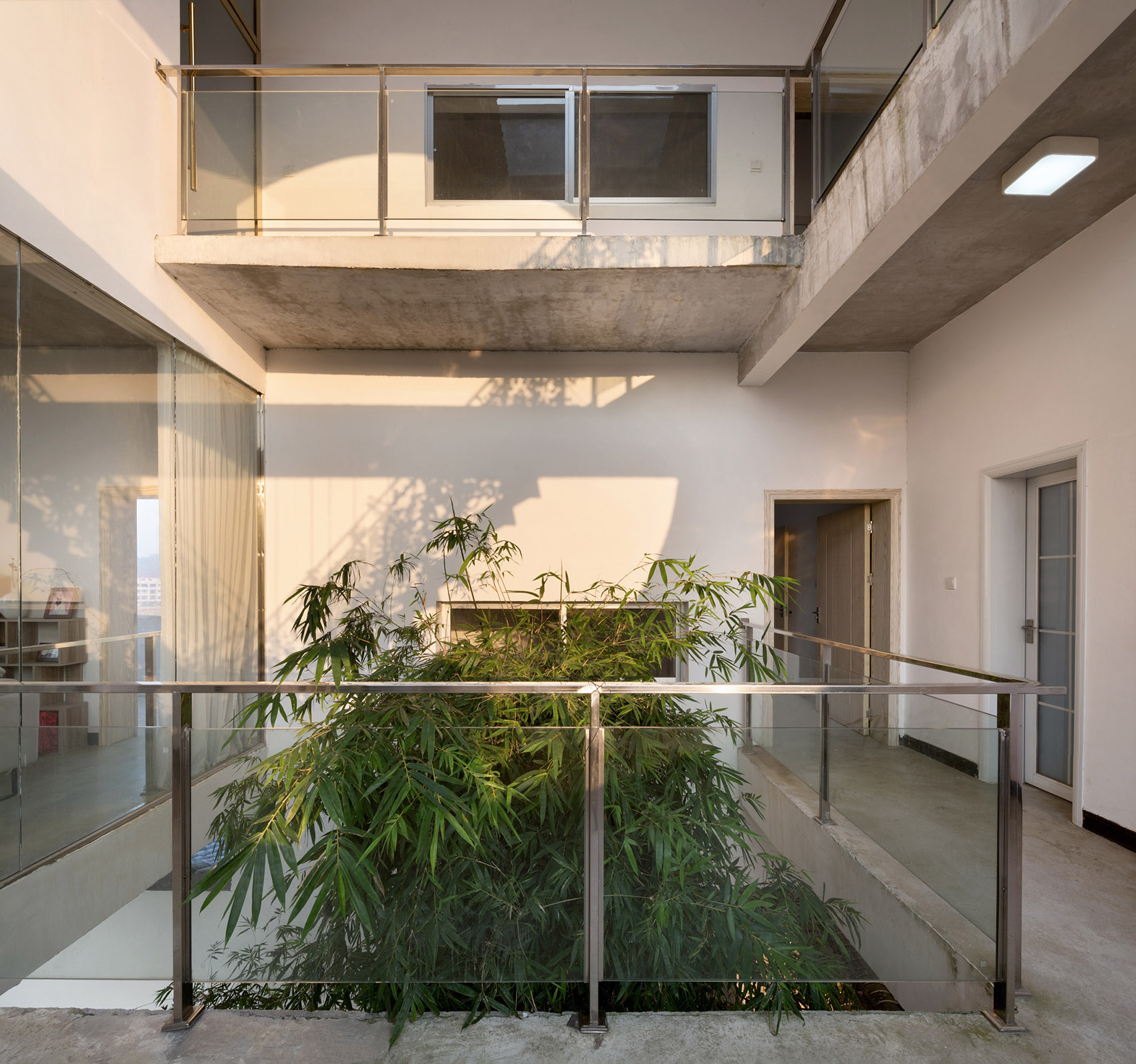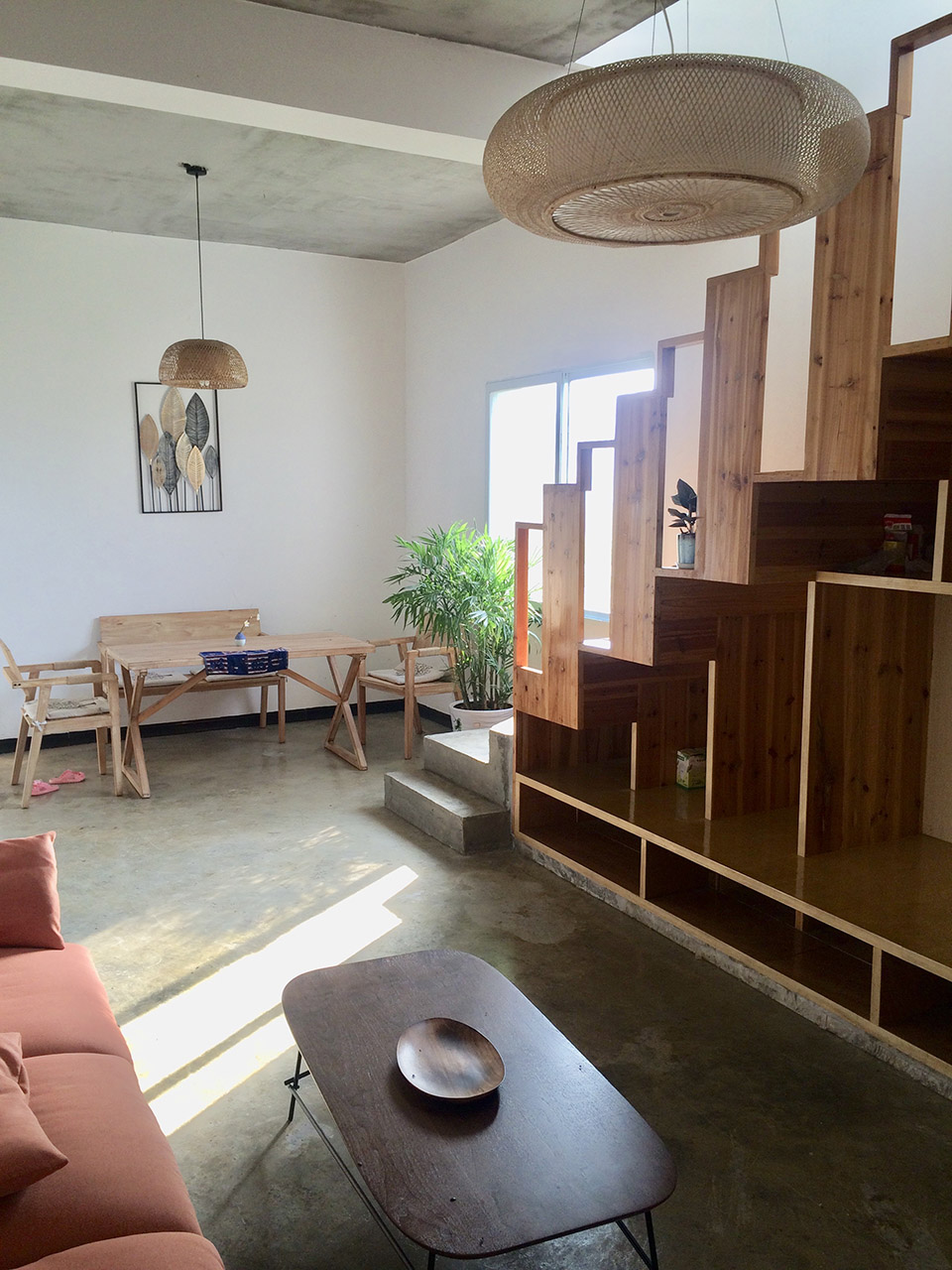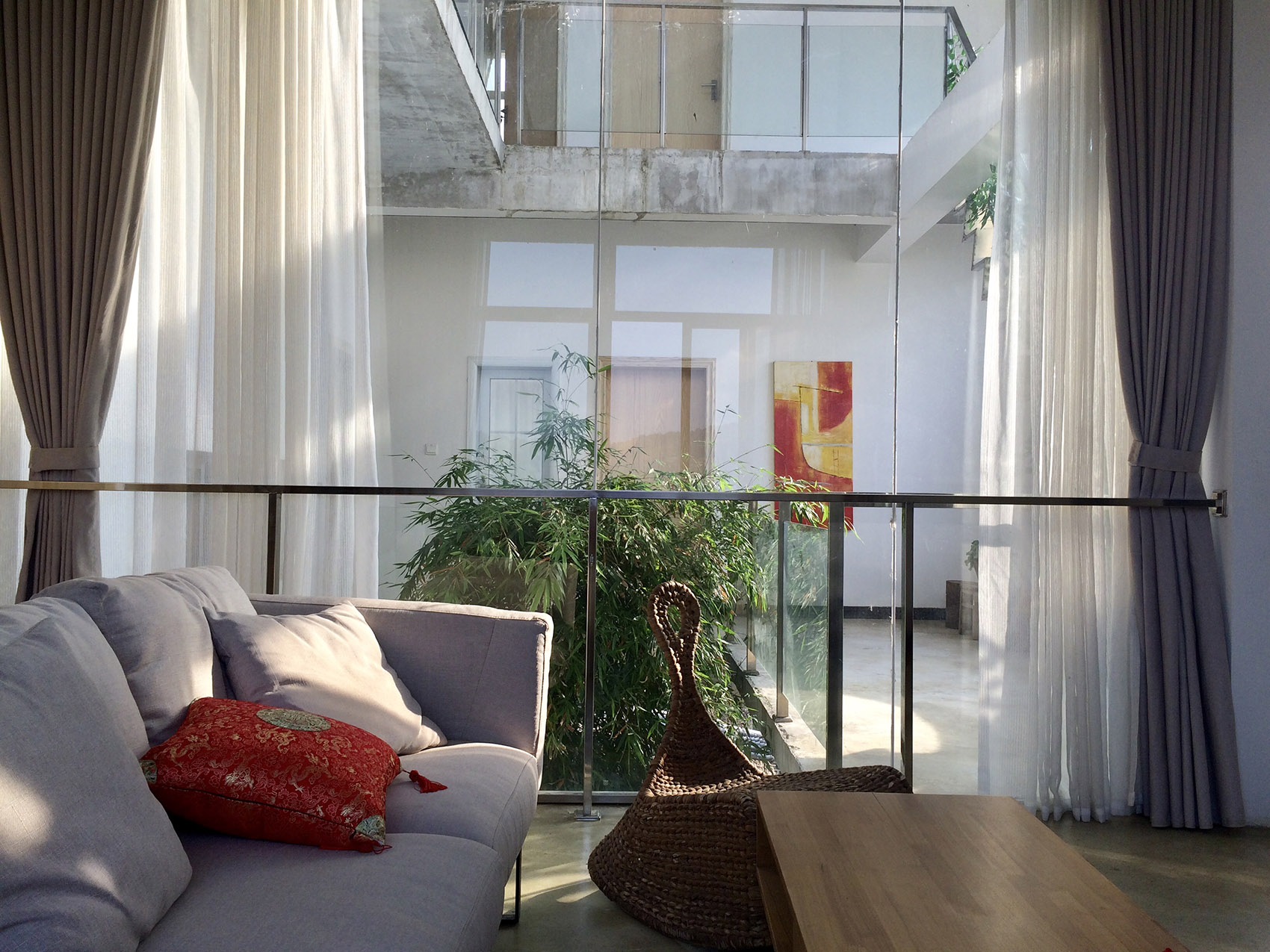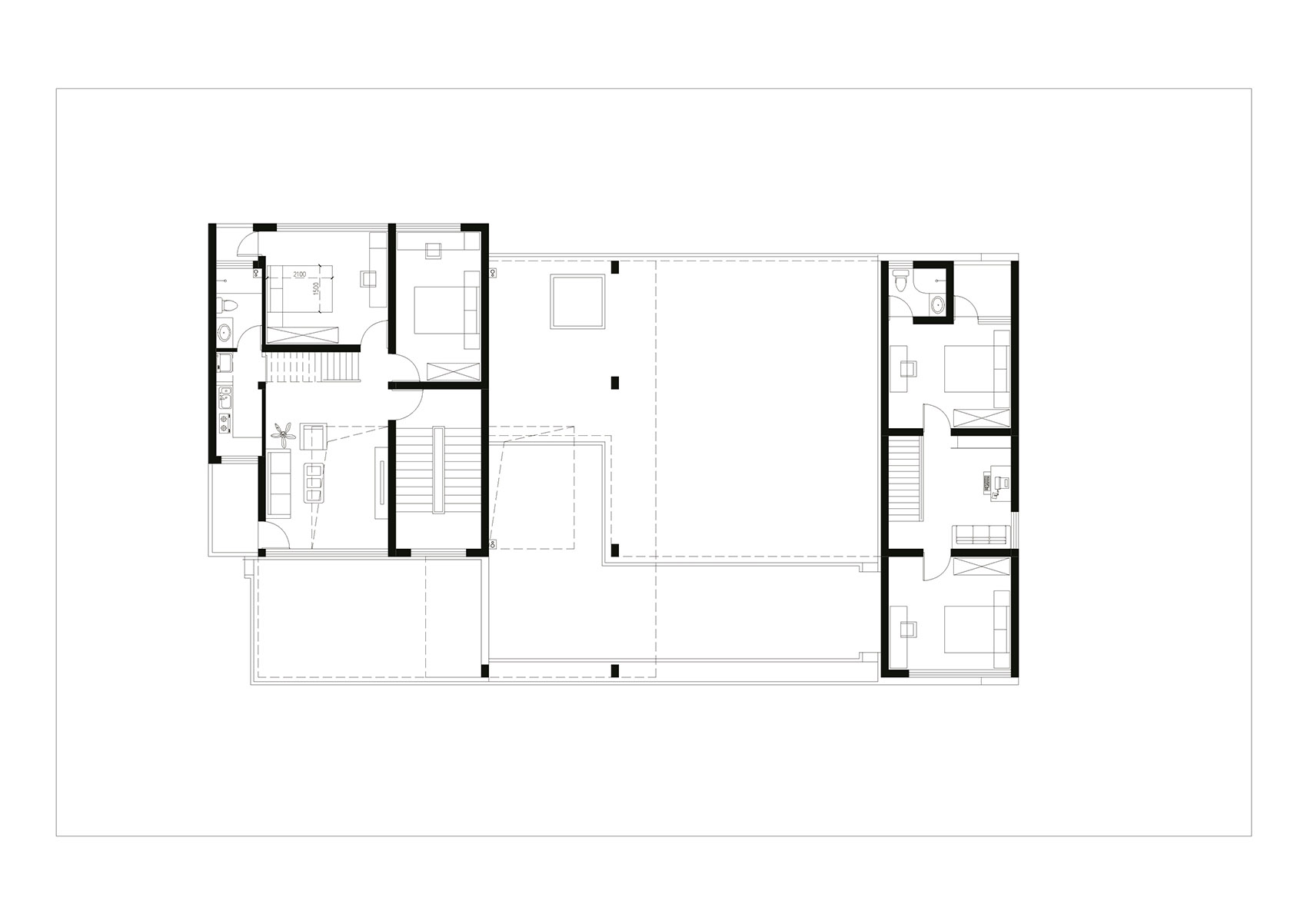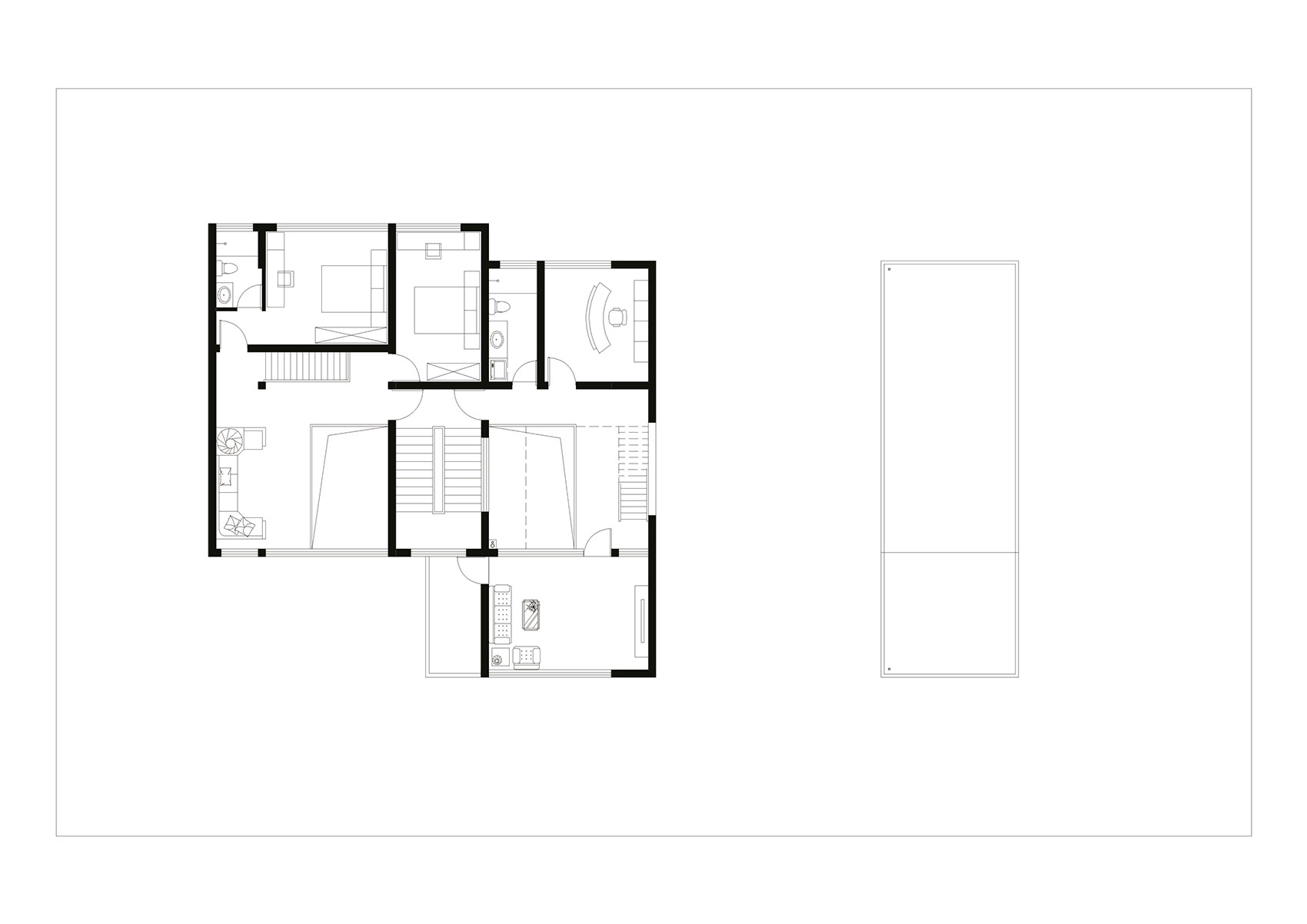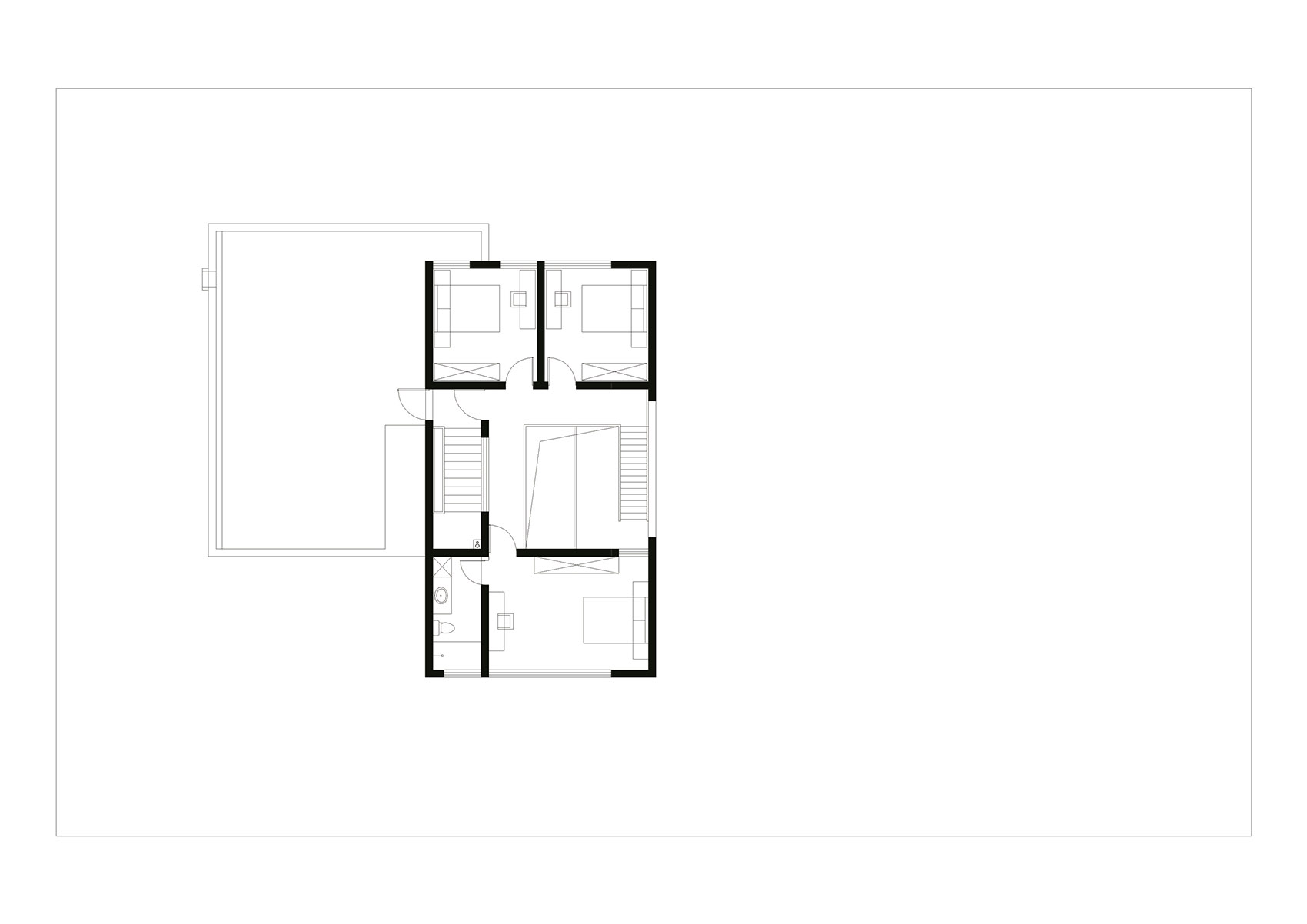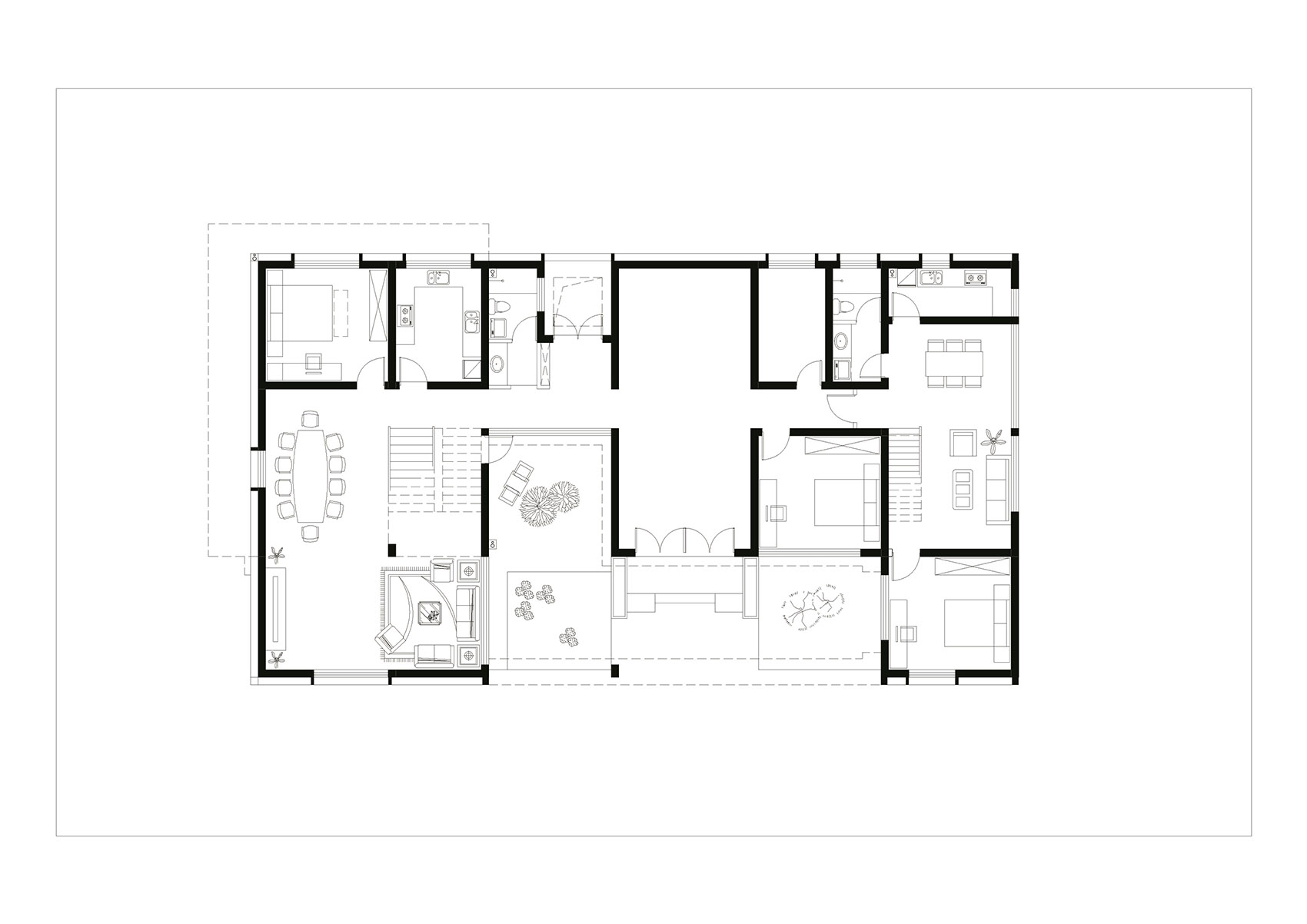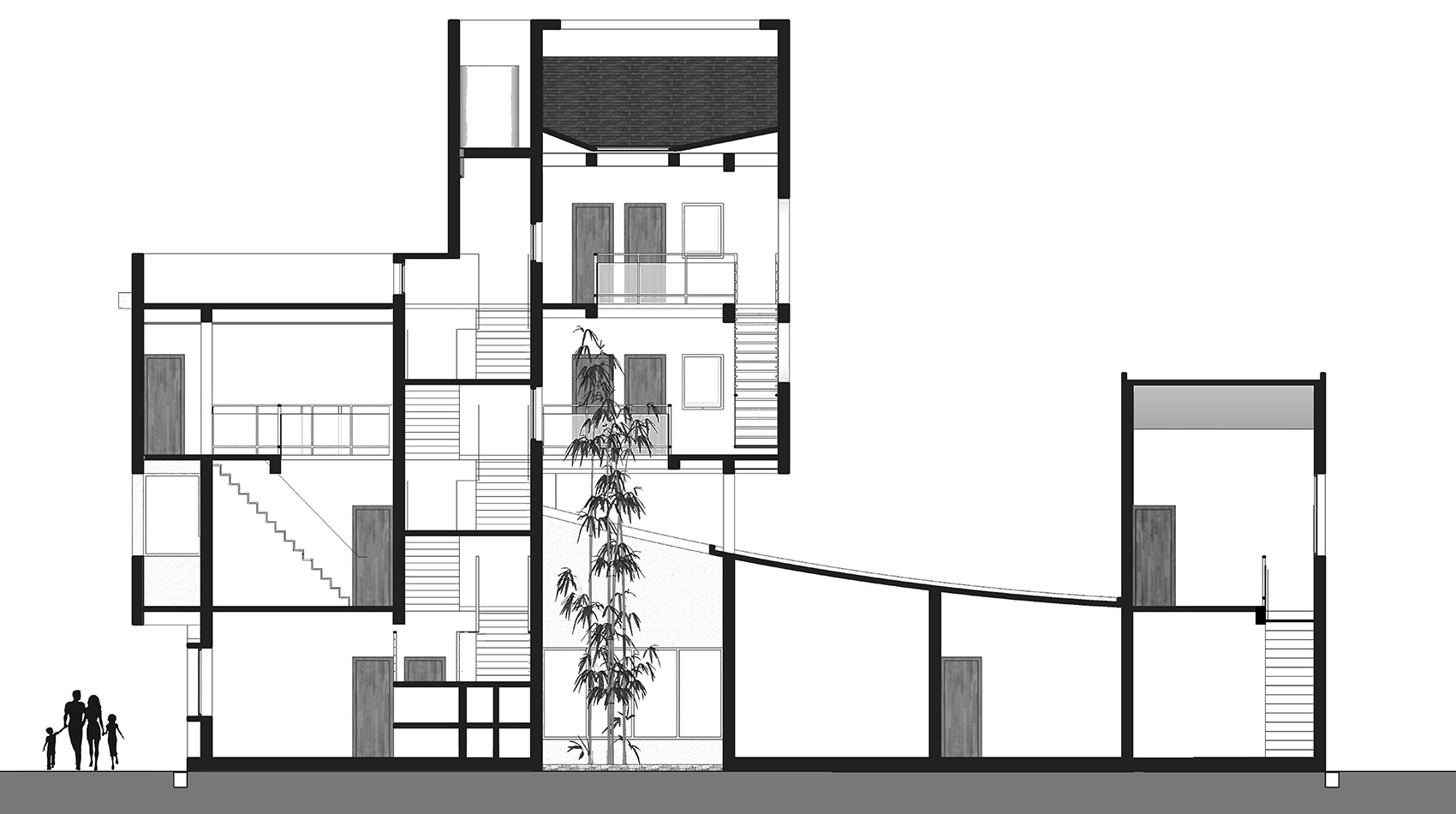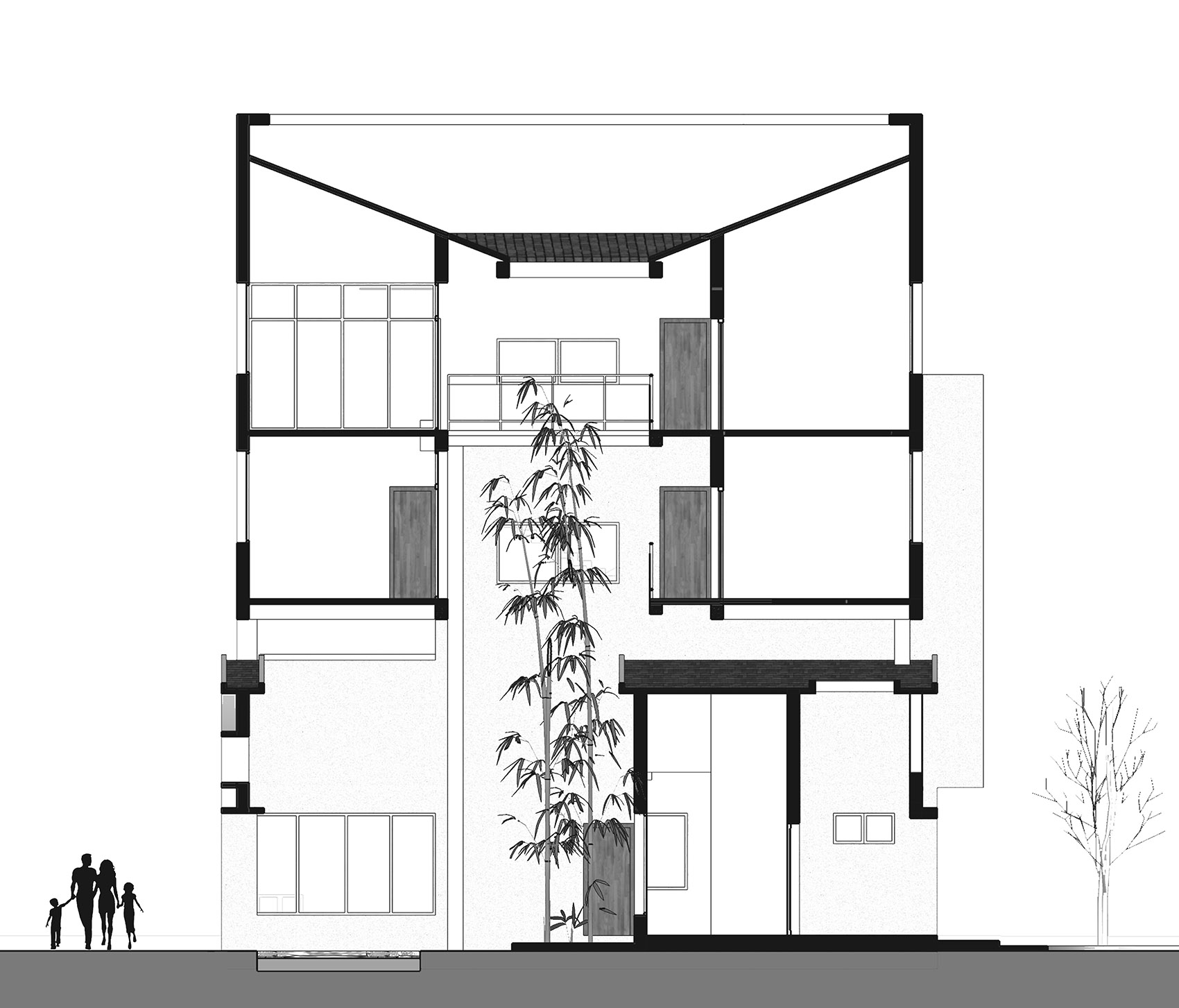这是一个建筑师为自己一家人设计的家宅,坐落在中国湖南的一个乡村,并由传统的农村泥瓦匠人修筑而成。这是一个四代同堂,家庭成员多达十几人的大家庭。由于原有旧房已不能满足一家人新的居住需求,三兄妹决定共同出资改建新宅。
▼项目概览,project overview ©陈远祥
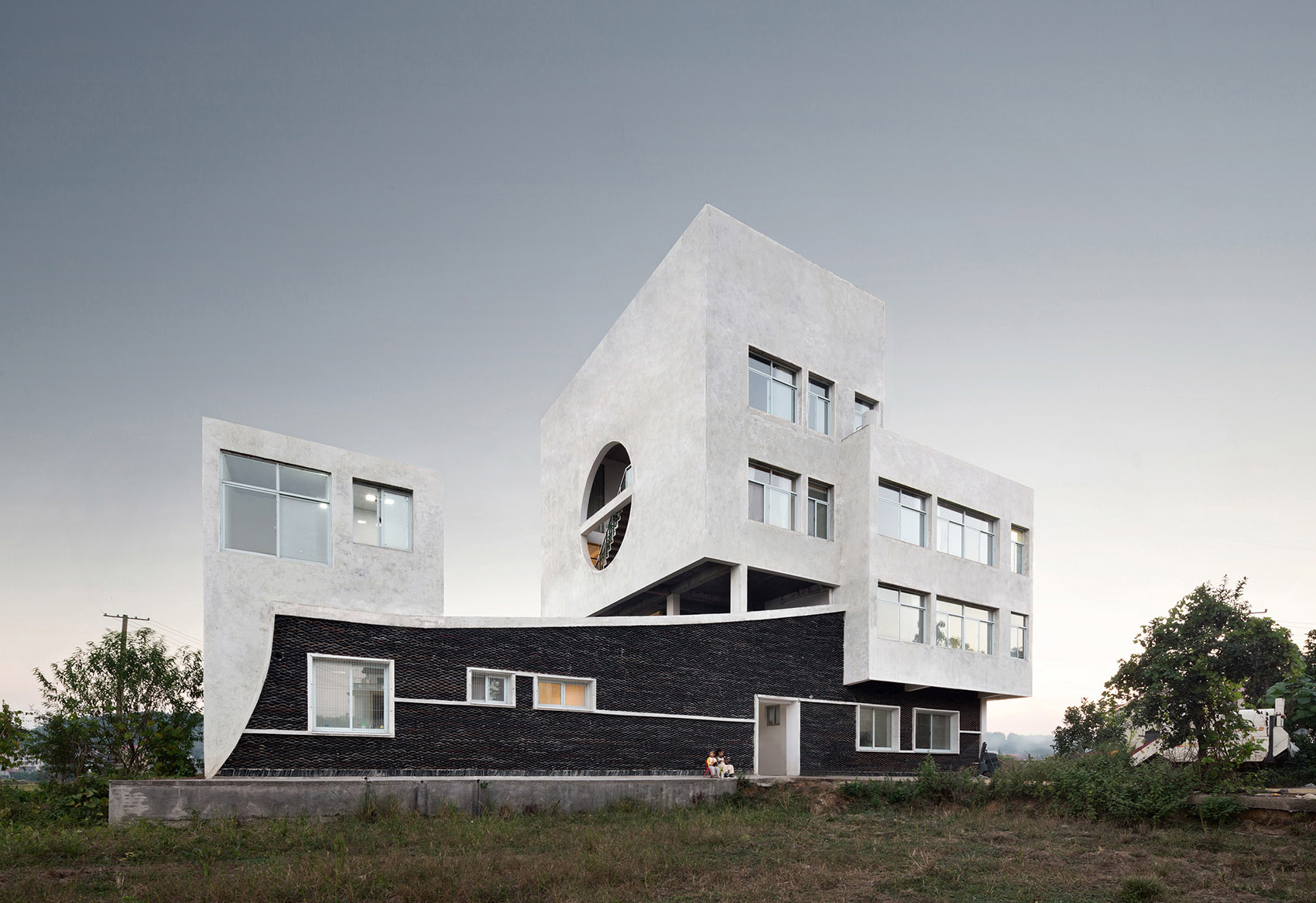
This is a house designed by an architect for his family. It is built by traditional rural clay masons, located in a village in Hunan, China. This is a large family of four generations with up to a dozen family members. As the original old house can no longer meet new needs of living, the three brothers and sisters decided to jointly invest in the construction of a new house.
▼场地鸟瞰,site aerial view ©陈远祥
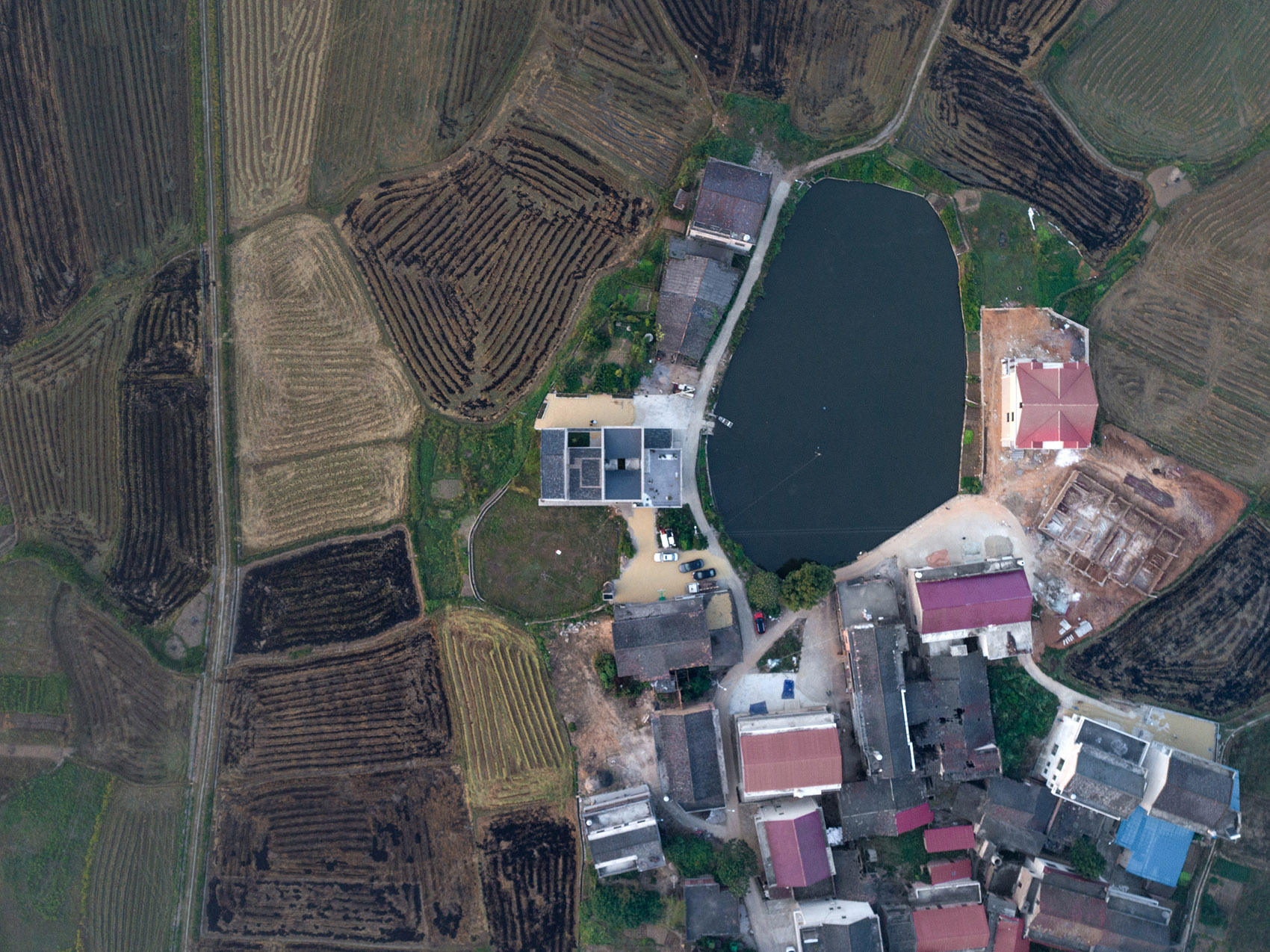
▼住宅外观,exterior view ©陈远祥
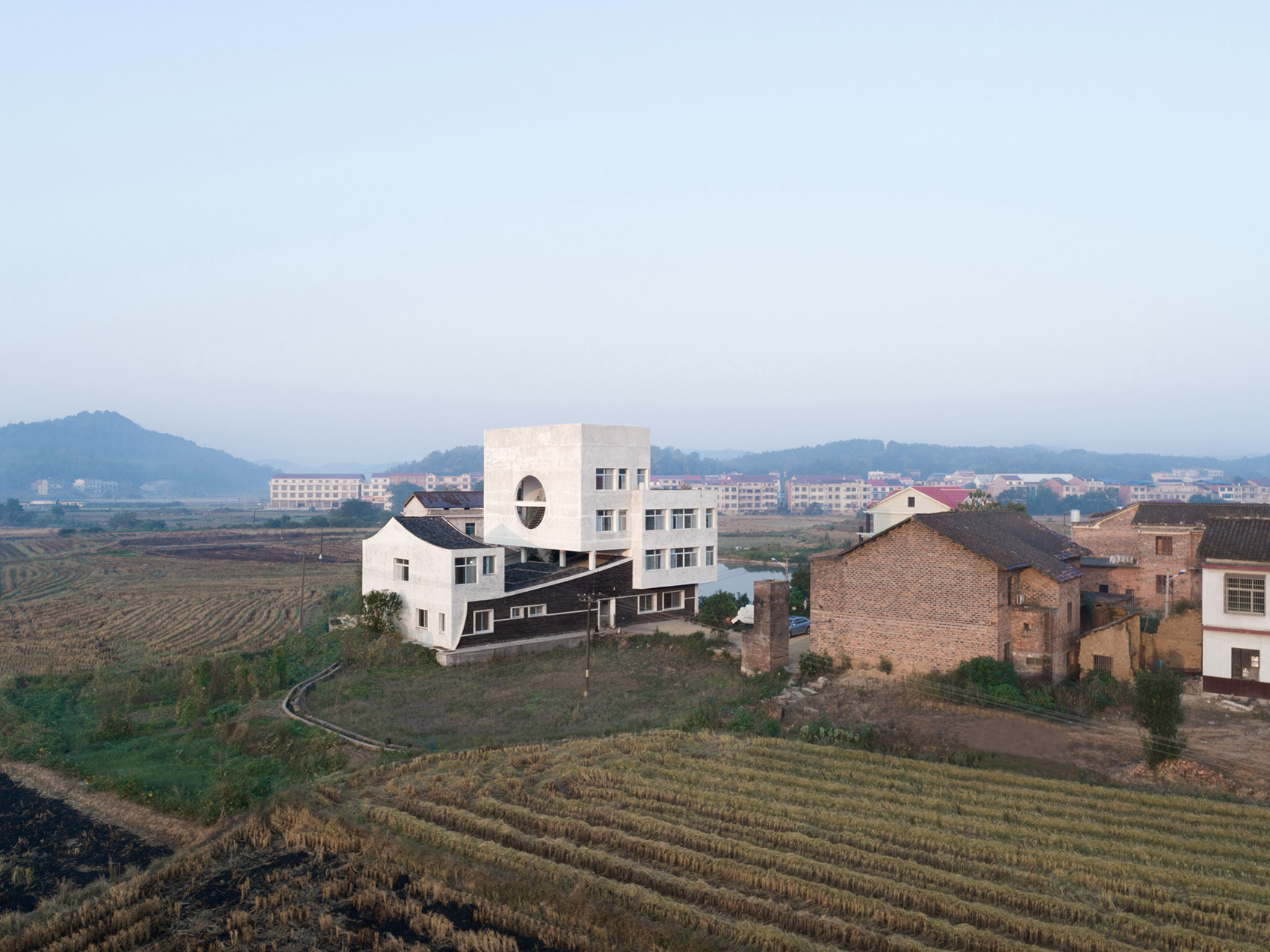
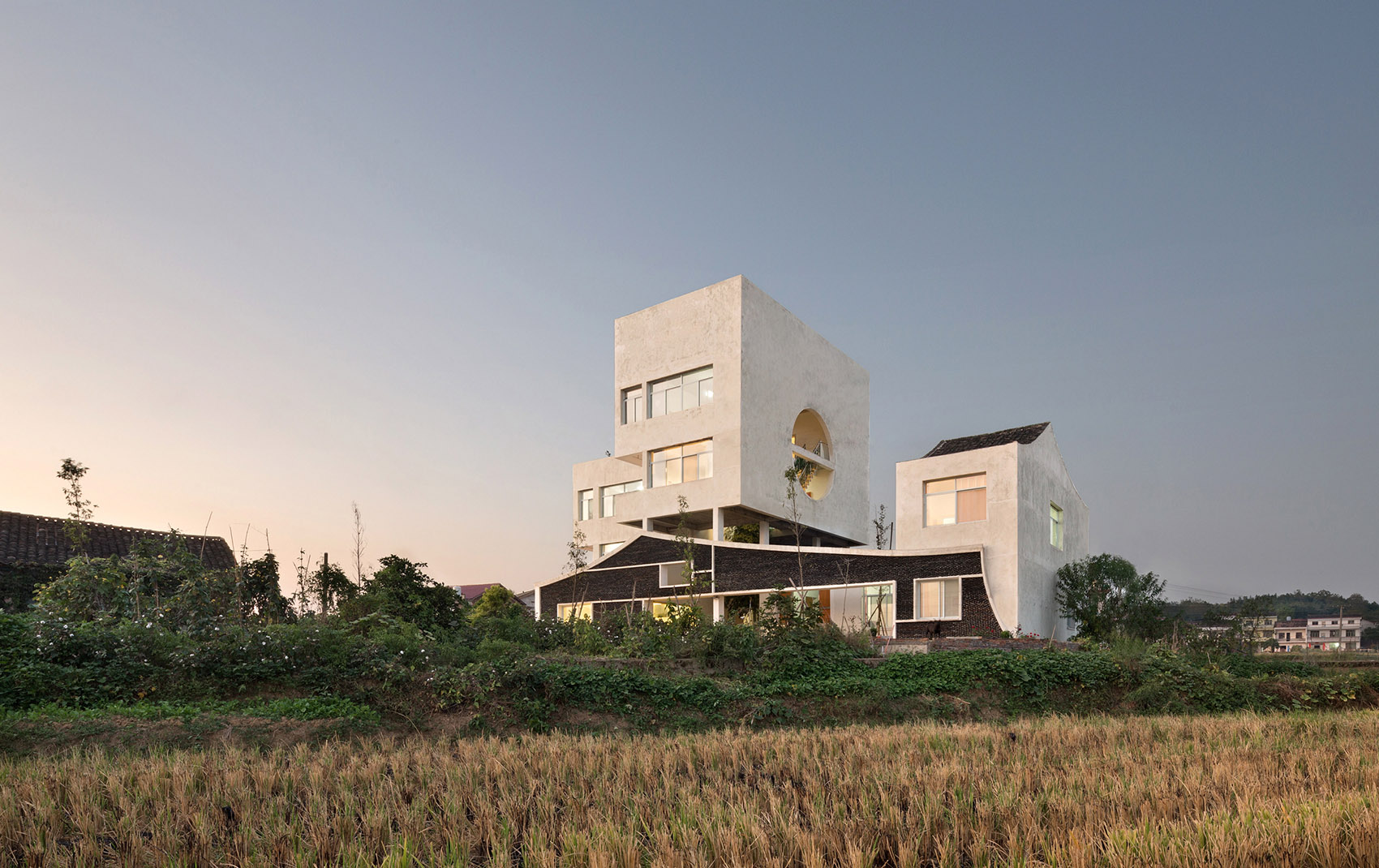
在中国的乡村,随着家庭成员和生活环境的不断变化,曾经所谓的家往往很容易变得支离破碎。这样的现象在农村司空见惯,儿女成家后便开始分家,另起炉灶往往成为必然。空间距离过远,容易使家人之间产生隔阂;距离过近,则往往矛盾、争吵不断,更甚者,亲人反目成仇。建筑师结合自己一家人的具体情况,试图通过空间来组织起这样一群有着不同需求但又血脉相连的多代同堂的一家人的生活,这是一个非典型的“集合住宅”。
In rural China, what used to be called home can easily become fragmented as family members and living conditions change. Such a phenomenon is common in rural areas. After the children start a family, the family begin to split up and start new families. The space distance between family members can easily divide the family. Meanwhile, without distance, relatives are likely to turn against each other. The architect tries to organize his multigenerational families through space, based on the specific situation of his family. This is an atypical “gathering house.”
▼水岸视角,view from the water front ©陈远祥

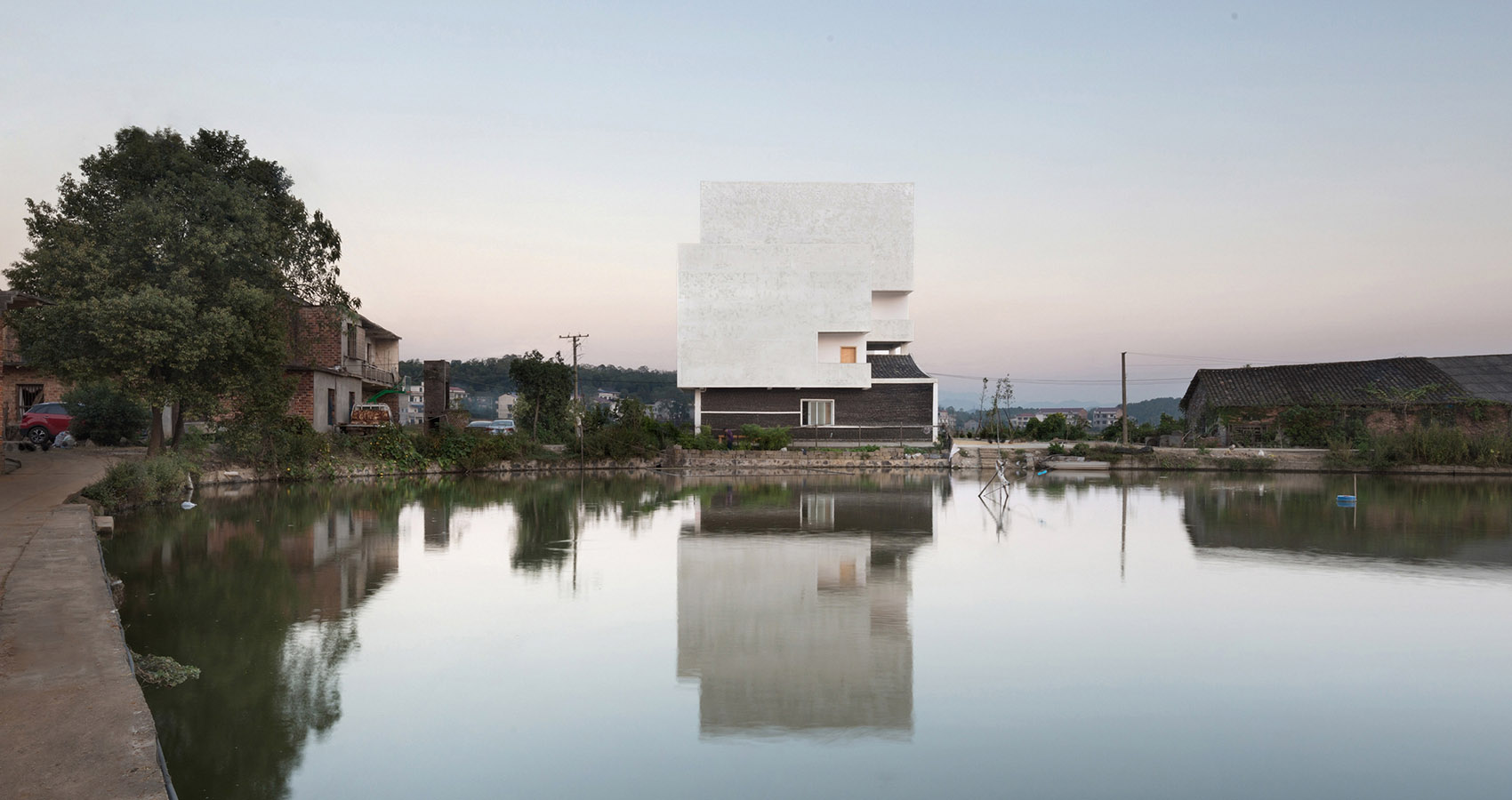
家宅依据血缘关系来进行空间的规划和布局。父母哺育了两个儿子,一个女儿,大儿留守老家,女儿远嫁他乡,小儿志在远方,而今都已各自成家。一个家衍生出三个独立的小家,家宅亦如此。建筑在形式上呈现出四个体块的组合关系。一层大铺开的传统坡屋顶支撑起三个独立的简约方盒子。一楼是爸妈,奶奶以及公共的起居空间,局部一楼二楼是姐姐的套间,二楼及局部三楼是哥哥套间,局部三楼及四楼是弟弟(建筑师)的套间,每个套间内部通过小楼梯组织两层空间,公共楼梯则将哥哥与弟弟的套间联结在一起。而远嫁他乡的姐姐套间则完全独立在东侧,与主体起居空间脱离。
▼体块概念,massing sketch

▼东西向剖面图,east west section

The home is planned on the blood relationship. There are two sons and one daughter in this family: elder son stays in the hometown, the daughter was married to a faraway place, and the younger son have own career in a distant city. Now all of the three have established their own family. Three small independent families have grown from the original family. The building presents a combination of four blocks in form, showing the relationship between the original family and the new families. A large traditional sloping roof covers three separate simple square boxes. The first floor contains bedrooms for parents and grandmother as well as a public living room. Part of the second floor of the first floor is the suite of the daughter. Part of the third floor and the rest of the second floor are the elder son’s suites. Part of the fourth floor and the rest of the third floor are the younger son’s (architect) suites. The two floors of each suite are connected by a small stairwell. The public staircase connects the two sons’ suites. The daughter’s suite is on the east side, completely independent from the main living space.
▼从立面圆洞望向楼梯,view to the stair through the opening ©陈远祥
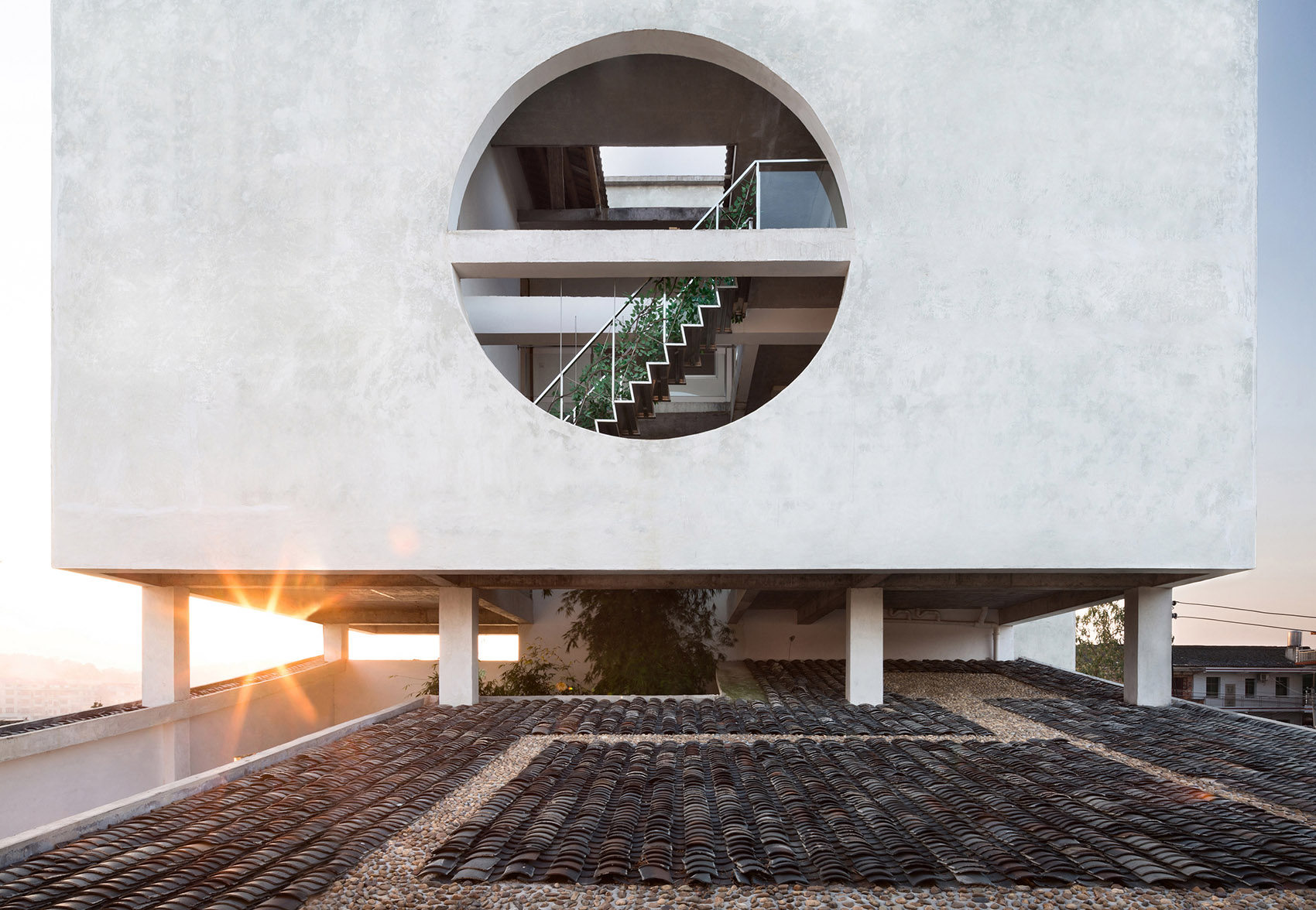
▼传统坡屋顶支撑起三个独立的简约方盒子,a large traditional sloping roof covers three separate simple square boxes ©陈远祥
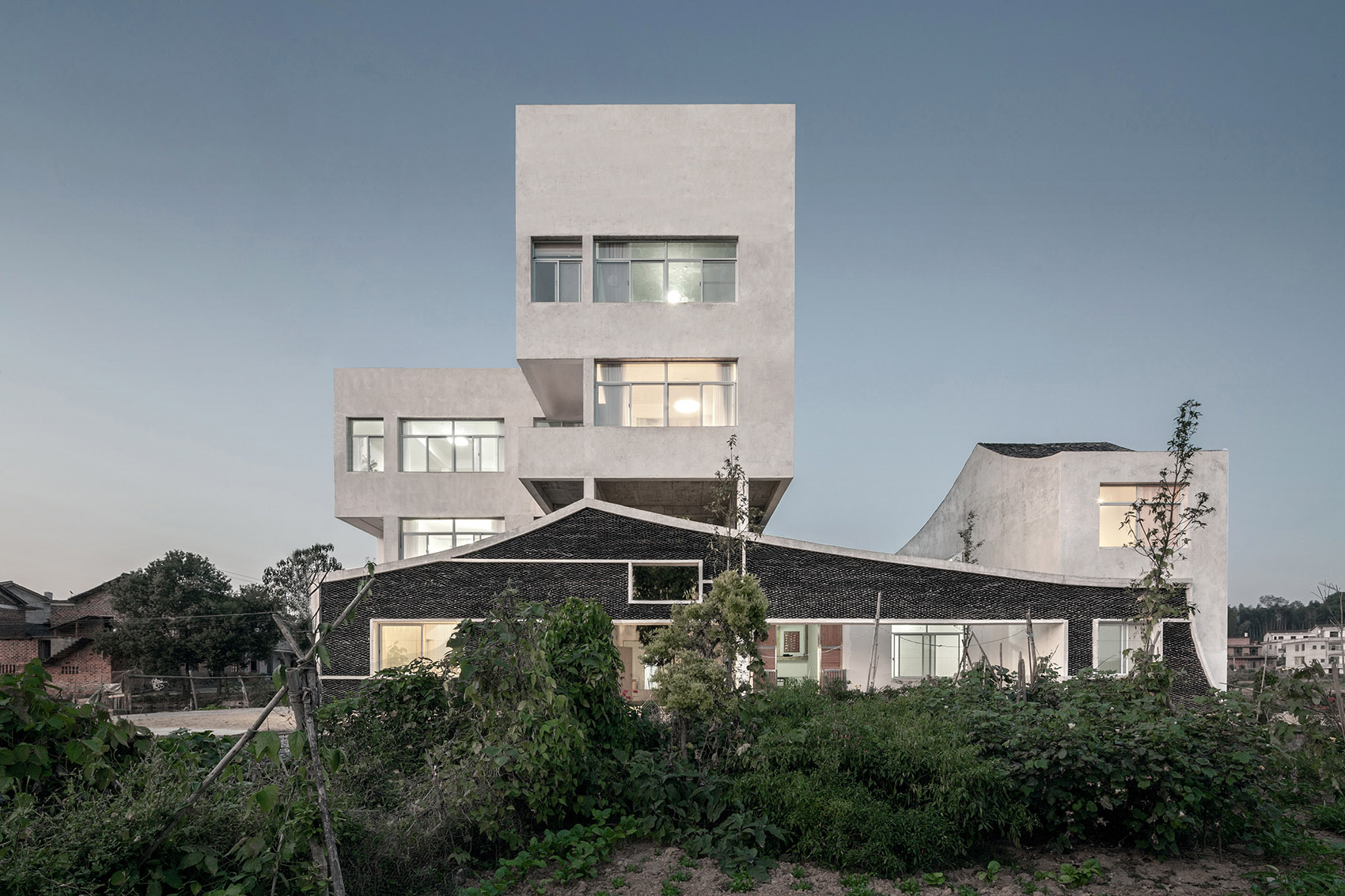
在中国农村,长子往往成为承担父母养老的主体,因此哥哥的套间非常接近父母生活的空间以便照顾父母,而弟弟常年生活在外,他的套间被设置在较上的体块。由于父母和奶奶依然延续着农村的传统生活,而子女往往习惯并趋向于城市的套间起居生活,彼此都有着不同的空间需求。因此,在首层的平面设计中延续了农村传统布局形式,引入了院落空间,同时立面嵌入青瓦打造传统风貌。平面组织以堂屋为基础,并将长久以来矛盾不断的妈妈和奶奶的主要生活空间分别布置在堂屋和庭院的左侧和右侧(右侧主体上是姐姐的套间,由于姐姐一家几乎很少在家居住,因此该套间的一层主要为奶奶使用)。而三个子女的各个套间都有单独的出入口,保持三个小家庭相对的私密性。其中哥哥和弟弟的套间采用跃层布置形式,并结合各自需求进行针对性布局,以满足不同需求。其中弟弟套间中部引入了贯通上下的开敞式架空庭院。
▼首层平面图,ground floor plan
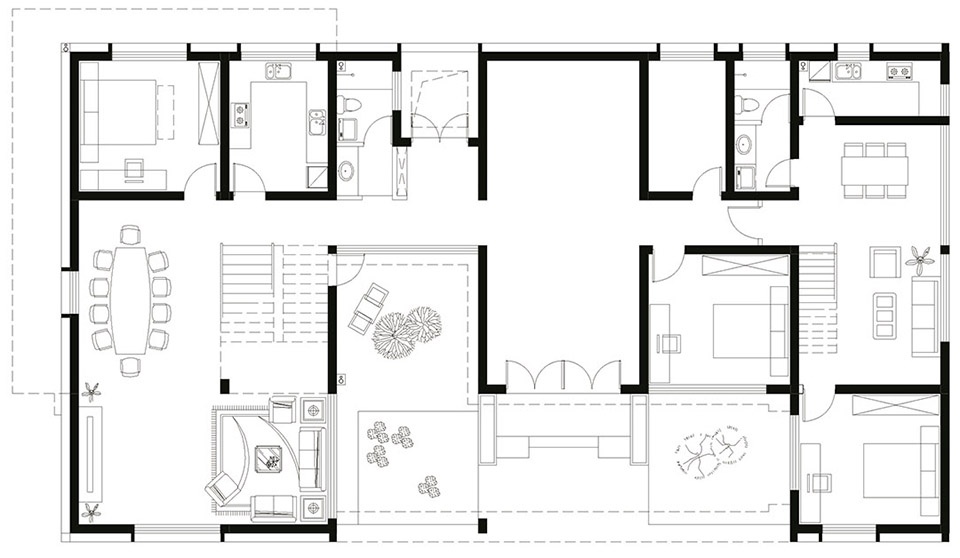
In rural China, the elder son often takes more responsibility for the parental pension. Therefore, the elder son’s suite is very close to the parents’ space, facilitating taking care of parents. The younger son lives in another city and his suite is set on the upper floor. Different generations have different living needs: parents and grandmothers continue the traditional countryside lifestyle and children get used to the modern lifestyle. To meet different needs, the first floor applied the traditional rural layout with the courtyard space, decorated blue tile. The main living spaces of the mother and grandmothers are placed on the left and right sides of the main hall and the courtyard, which are also the center of the first floor. Each of the three children has separate entrances to maintain privacy. Among them, the suites of sons adopt the form of hopping layout and different planning to meet different needs. The younger son’s suite introduced an open-air courtyard that runs through the upper and lower sides.
▼架空庭院,the open-air courtyard ©陈远祥
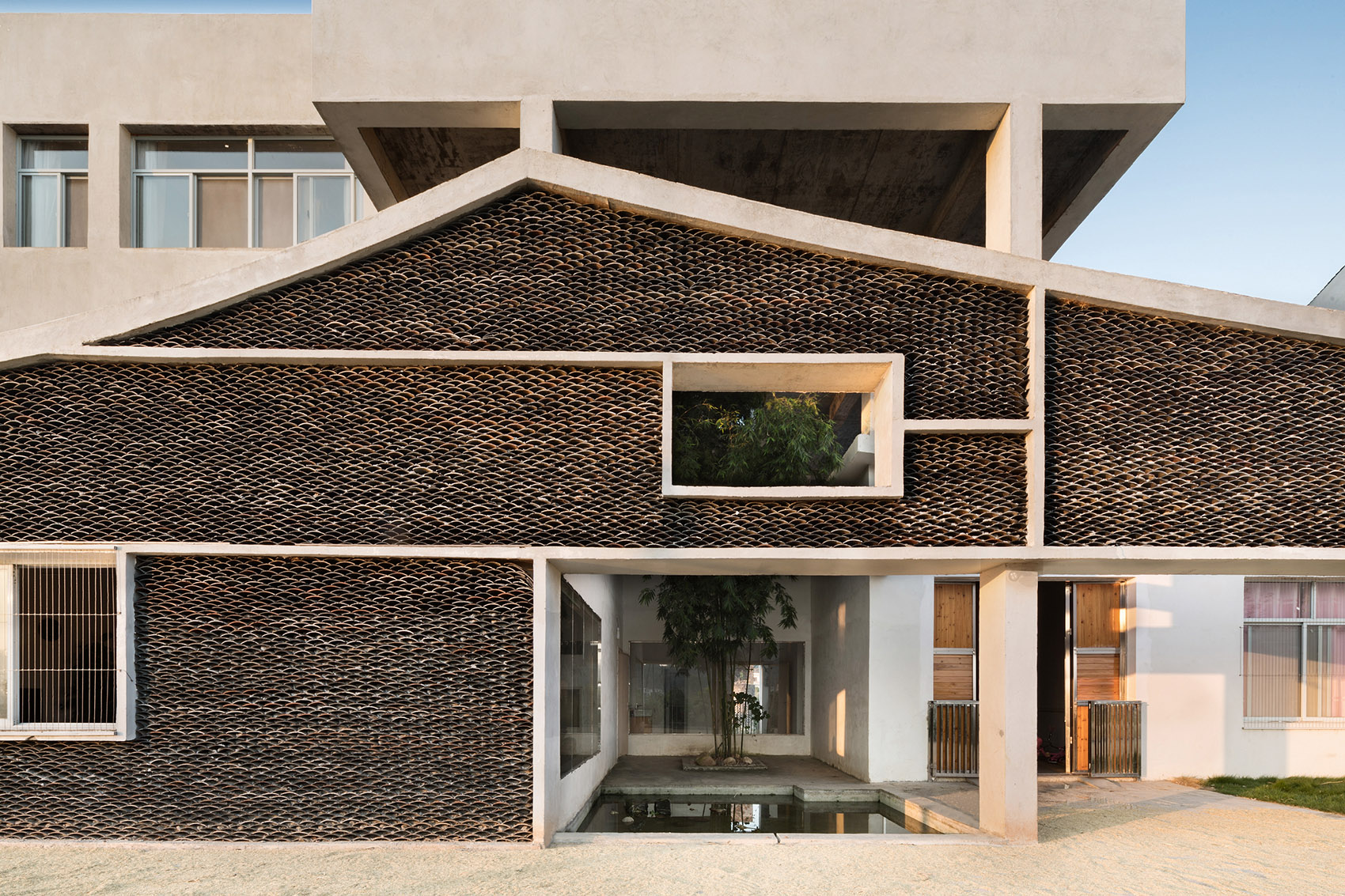
▼立面嵌入青瓦打造传统风貌,the facade is decorated with blue tile showing a traditional rural style ©陈远祥
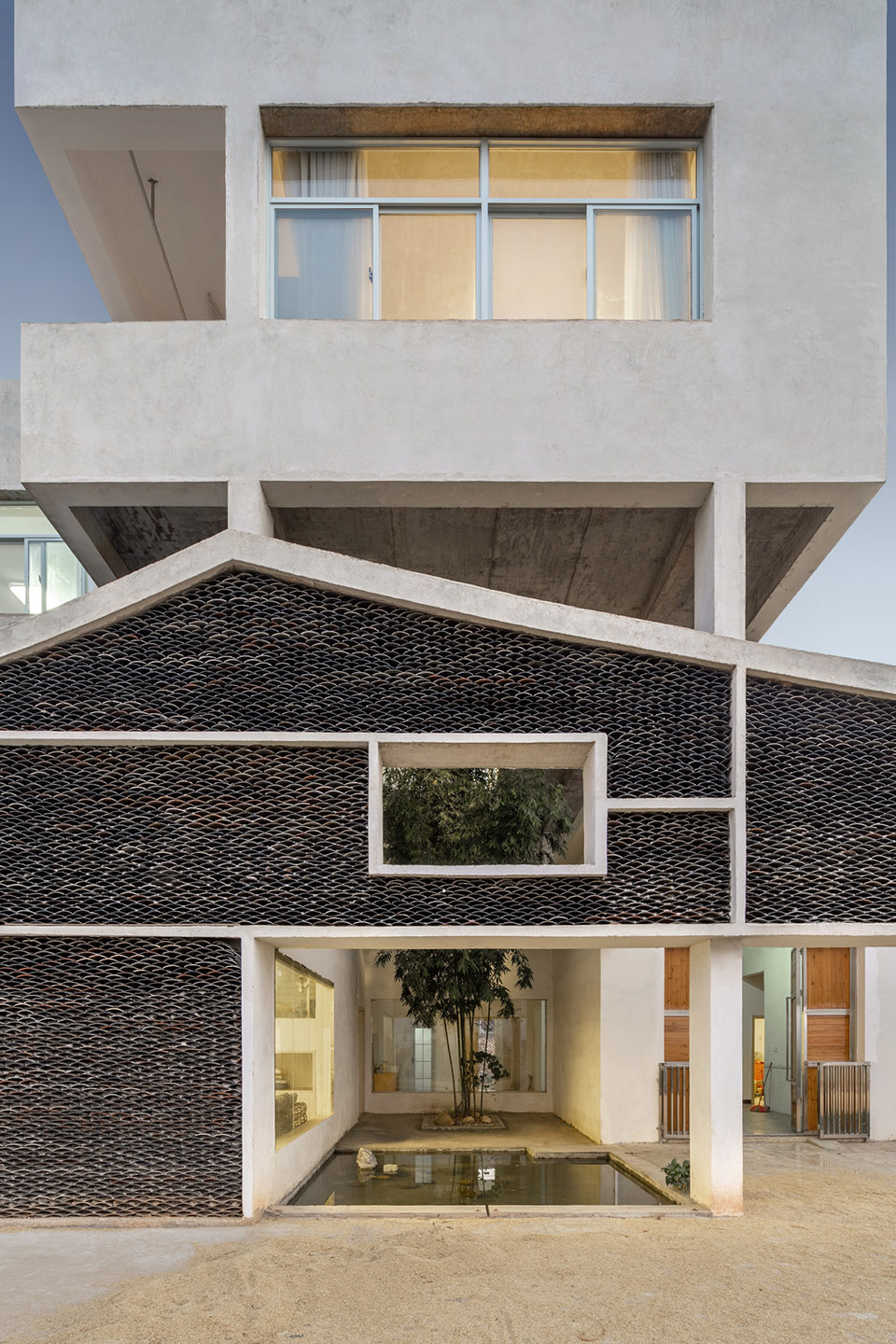

▼庭院细部,detailed view ©陈远祥
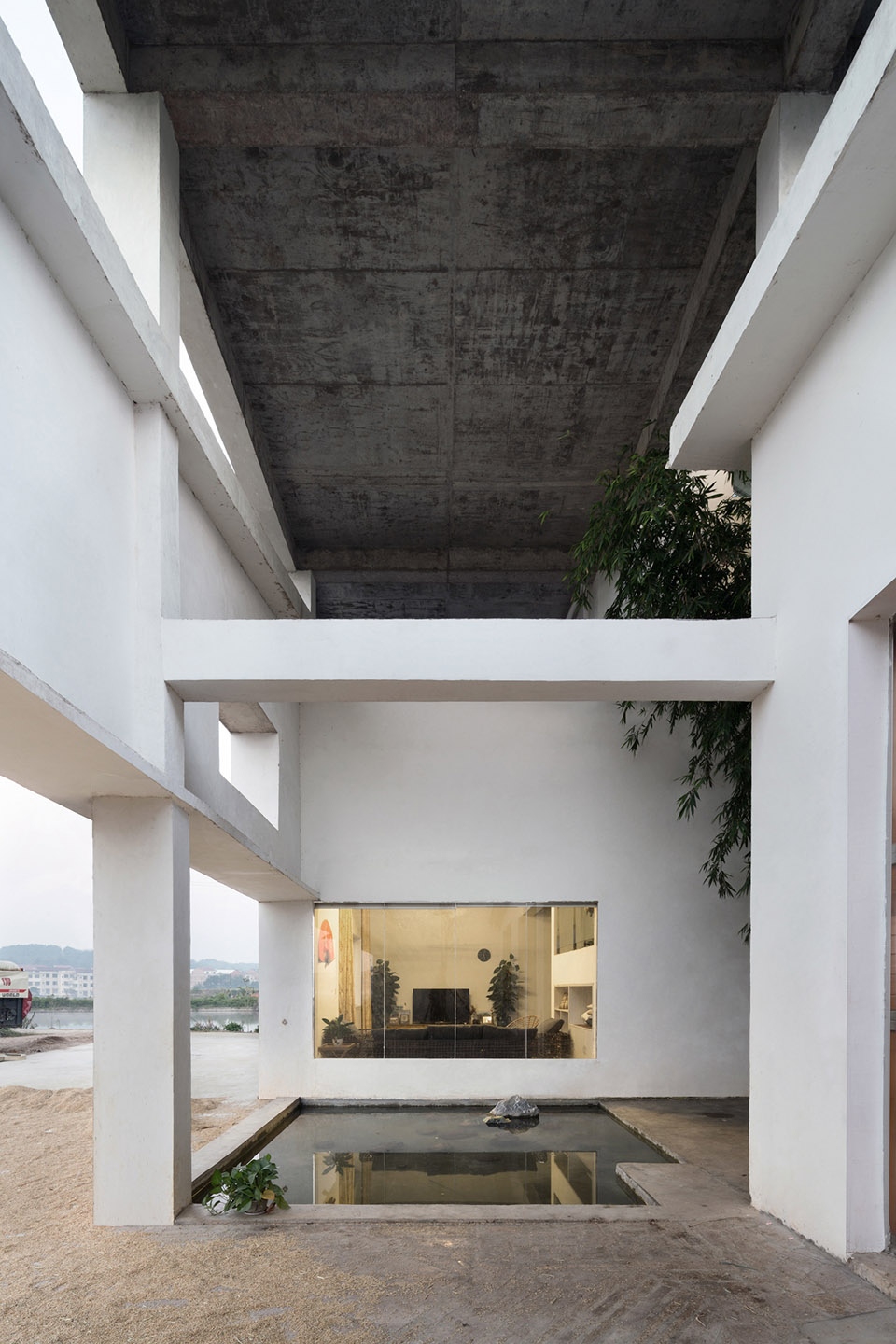
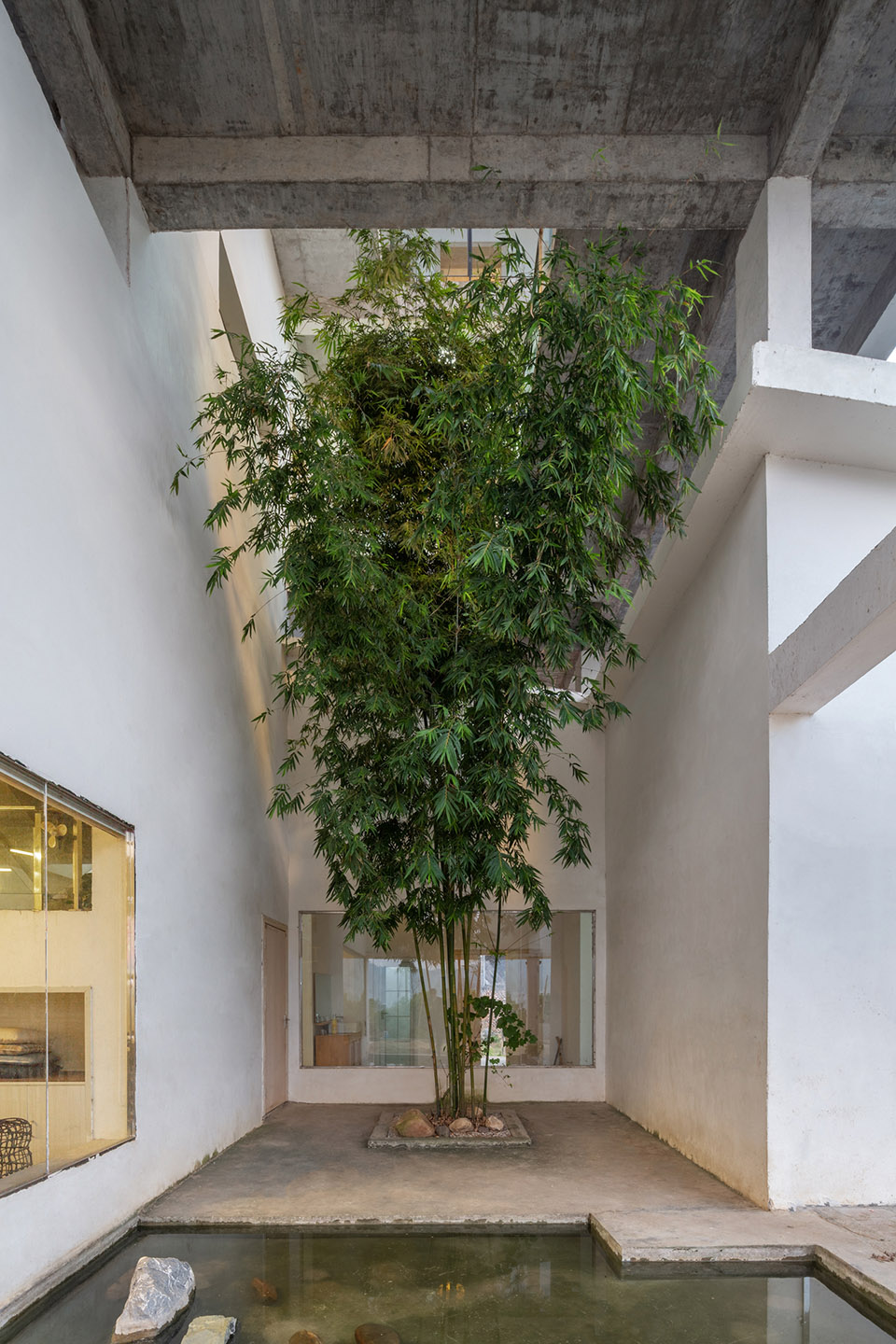
“家”不只是居住的容器,建筑师希望通过依托血缘关系构建起来的家宅探究“家”的本质,引发人们思考建筑与人的关系。
“Home” is not just a container for living. The architect wants to explore the essence of “home” through building a house according to blood relationship and evoke people to think about the relationship between architecture and social relationship.
▼从室内看庭院,courtyard view from interior ©陈远祥
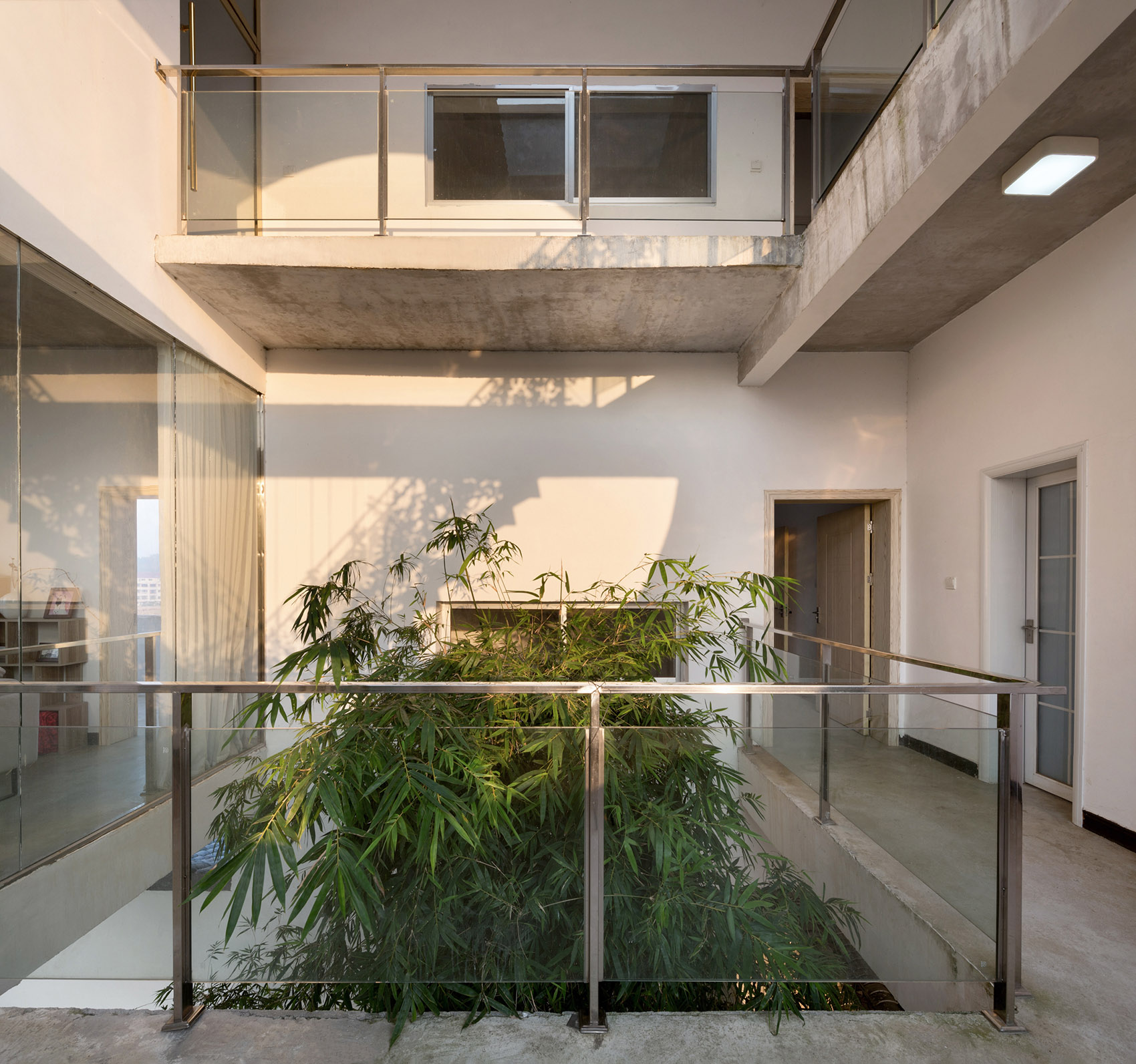
▼室内空间,interior view ©陈远祥
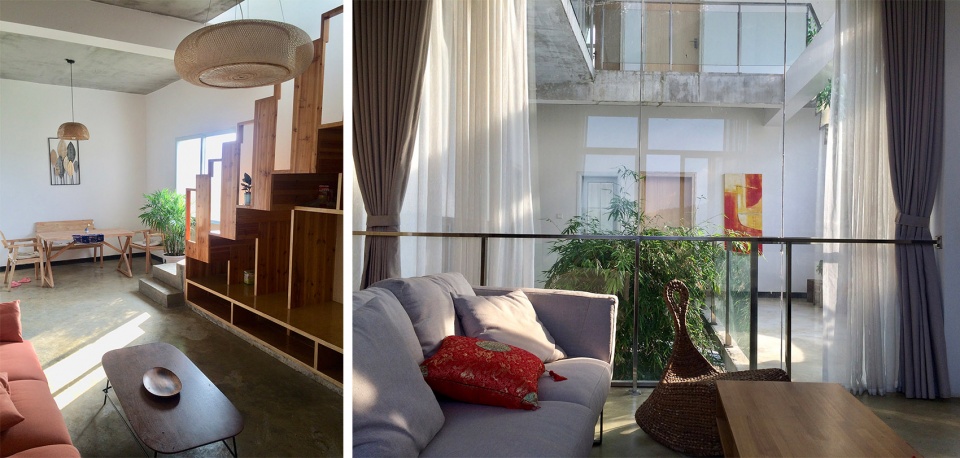
▼首层平面图,ground floor plan
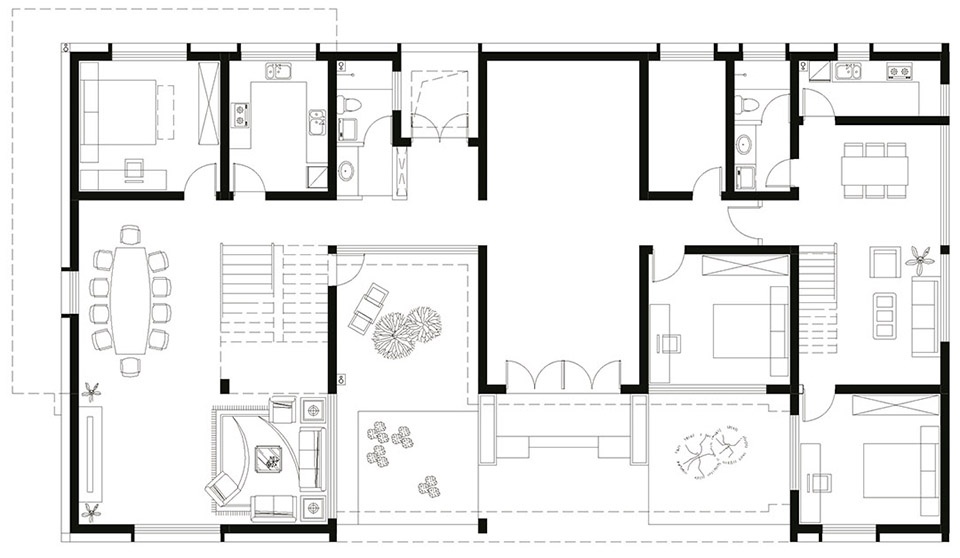
▼二层平面图,first floor plan

▼三层平面图,third floor plan
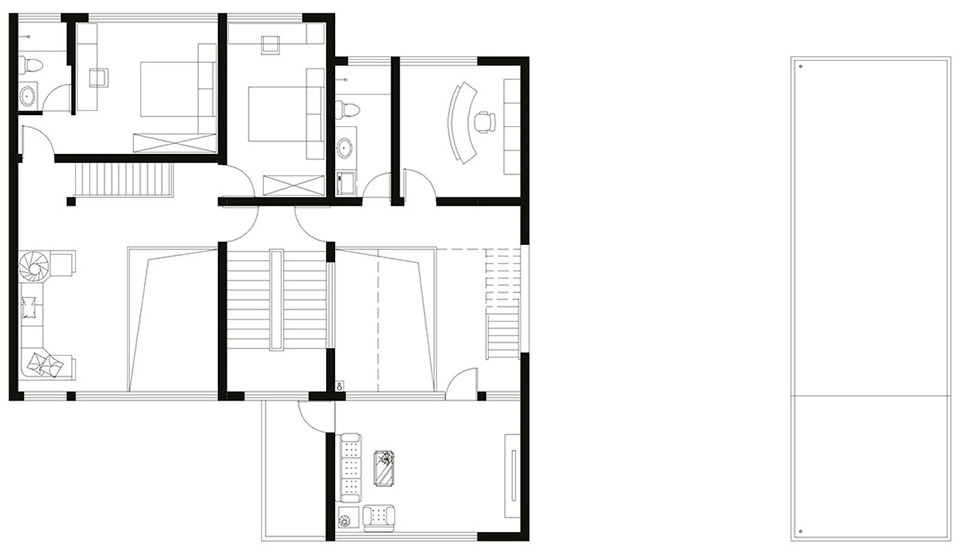
▼东西向剖面图,east-west section
